|
|
||||||
|
HOME
|
US Navy -
ships
|
US Navy - air
units
|
USMC - air
units
|
International
Navies
|
Weapon Systems
|
Special Reports |
||||||
|
|
||||||
|
|
||||||
|
US Marine Corps - Marine All-Weather Fighter Attack Squadron
533 VMFA(AW)-533 / VMFA-533 'Hawks' |
||||||
|
|
||||||
|
||||||
| 09/24 | ||||||
|
||||||
|
|
||||||
| images | ||||||
|
will transition to F-35B Lighting II aircraft 2023-24 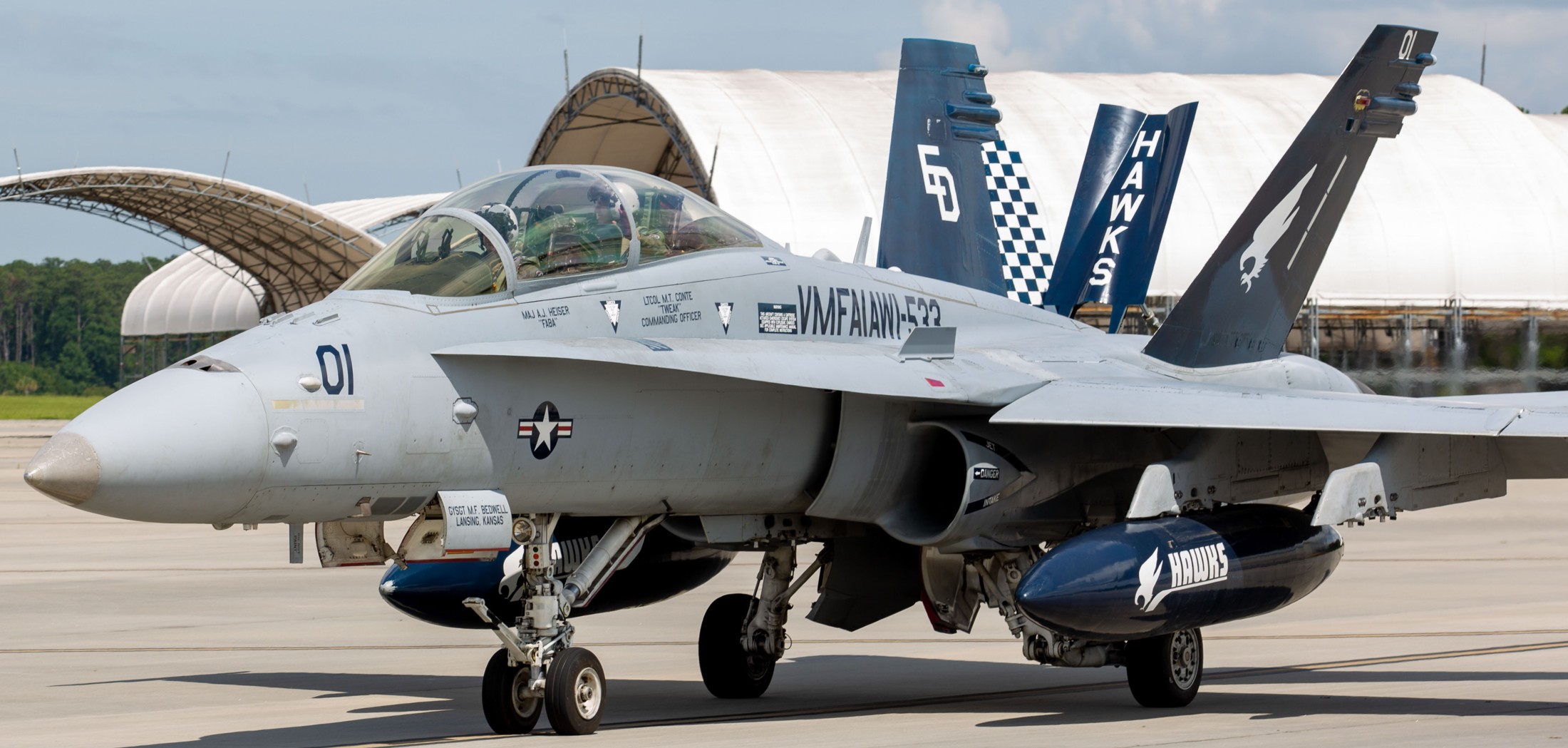 VMFA(AW)-533 final flight with F/A-18C/D Hornets at MCAS Beaufort, South Carolina - June 2, 2023 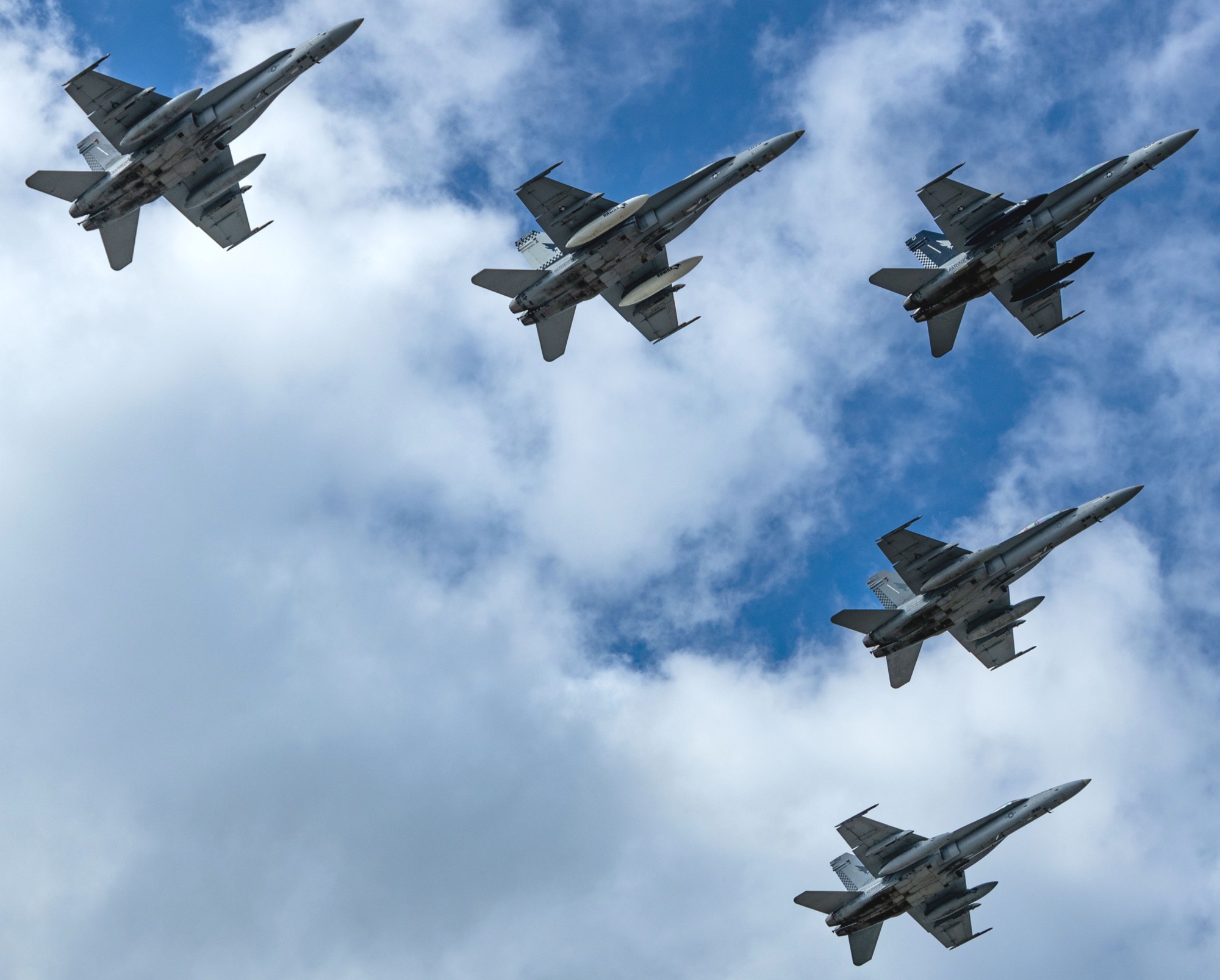 VMFA(AW)-533 final flight with F/A-18C/D Hornets at MCAS Beaufort, South Carolina - June 2, 2023 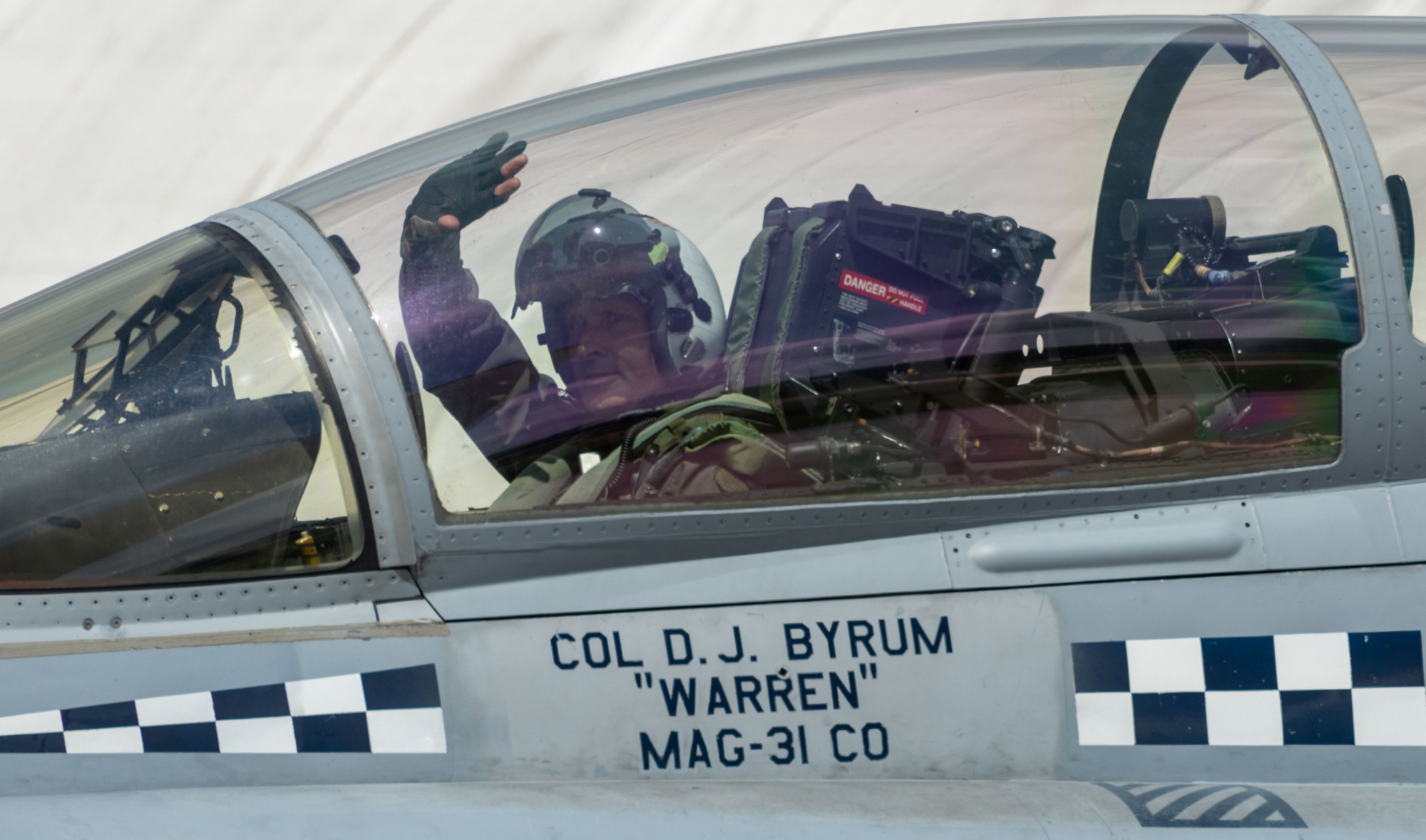 VMFA(AW)-533 final flight with F/A-18C/D Hornets at MCAS Beaufort, South Carolina - June 2, 2023 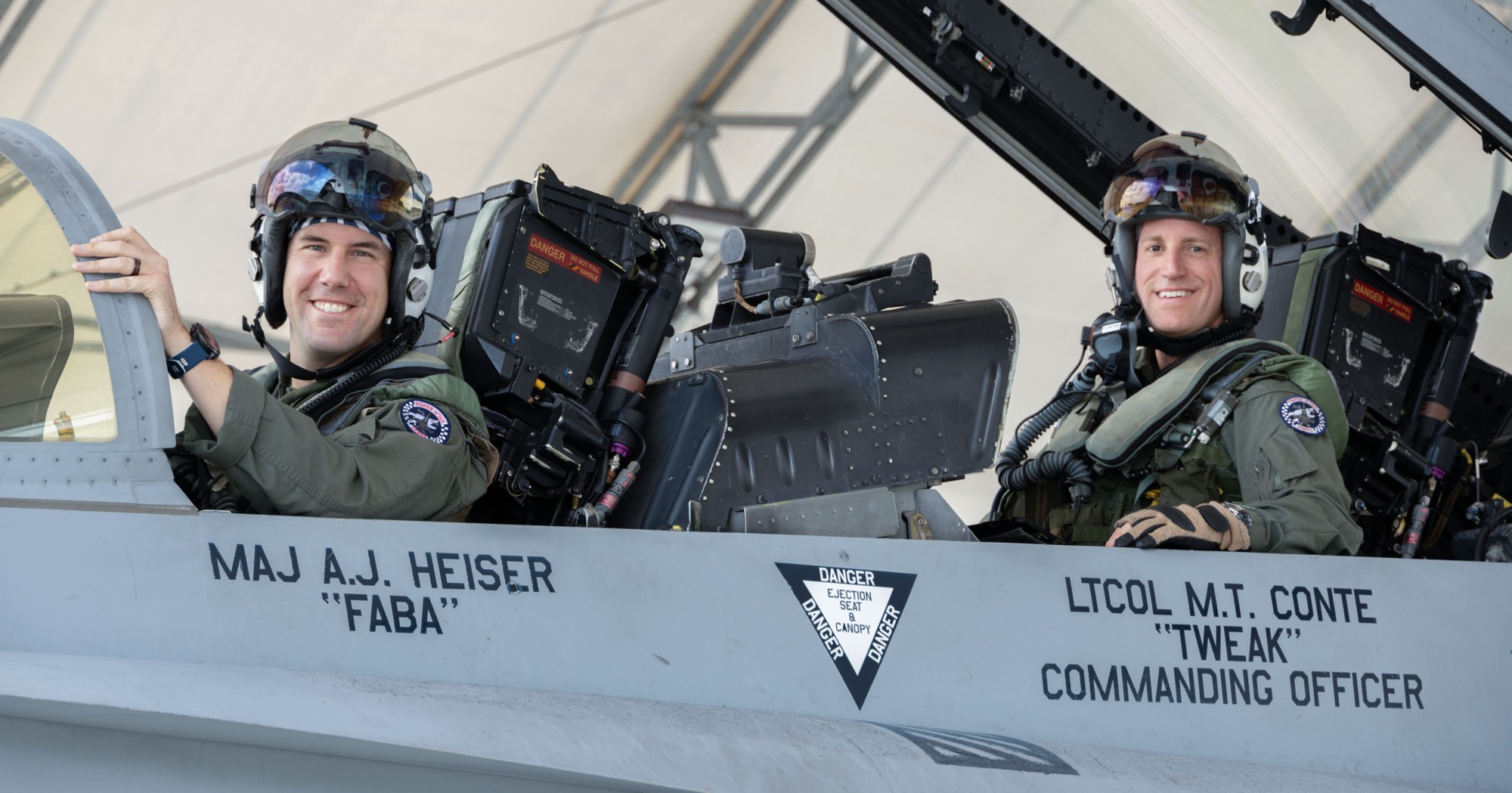 VMFA(AW)-533 final flight with F/A-18C/D Hornets at MCAS Beaufort, South Carolina - June 2, 2023 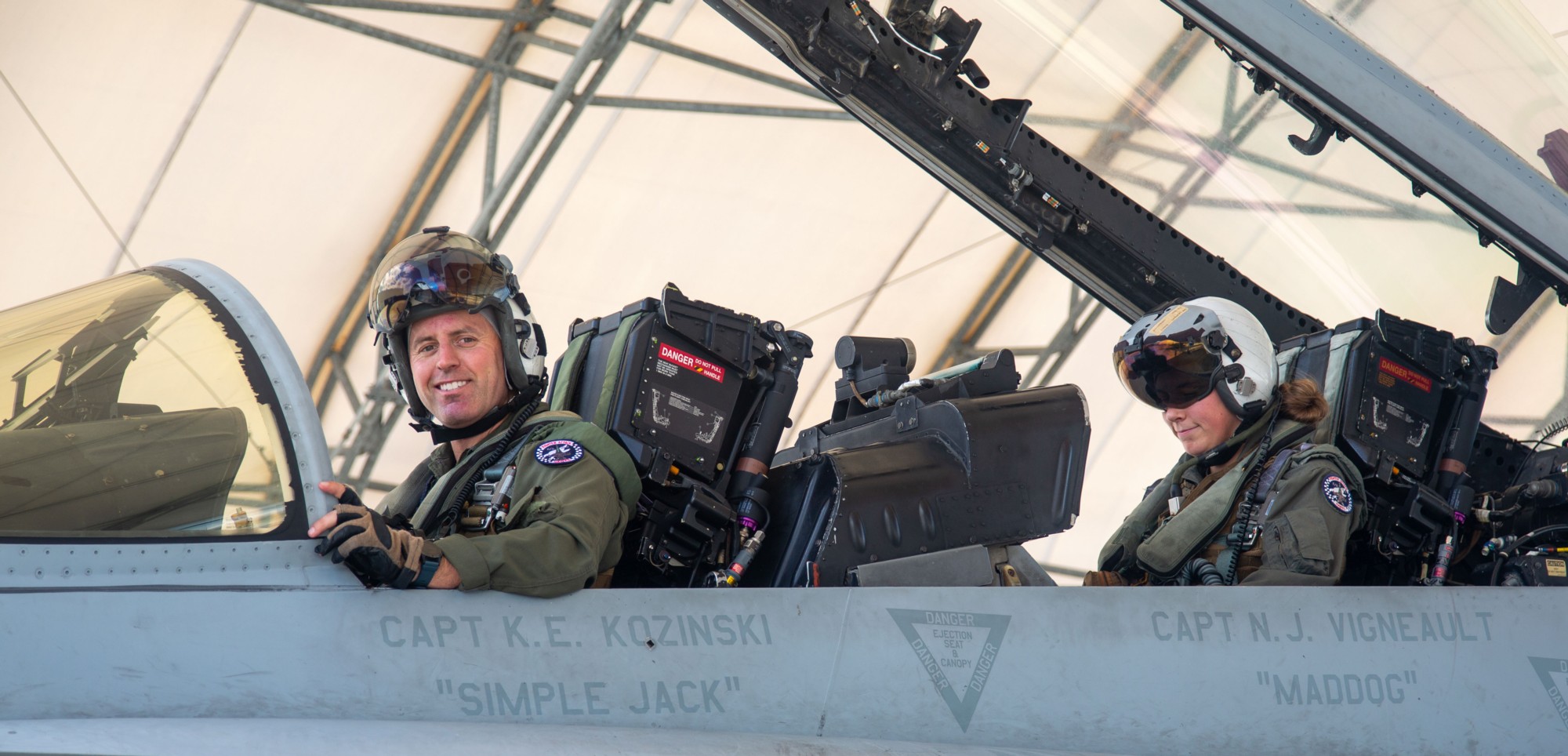 VMFA(AW)-533 final flight with F/A-18C/D Hornets at MCAS Beaufort, South Carolina - June 2, 2023  F/A-18D Hornet (VMFA(AW)-533) returning to MCAS Beaufort, South Carolina after an Unit Deployment Program in Japan - October 18, 2022  F/A-18C Hornet (VMFA(AW)-533) at MCAS Iwakuni, Japan - September 2022  F/A-18C Hornet (VMFA(AW)-533) at MCAS Iwakuni, Japan - September 2022 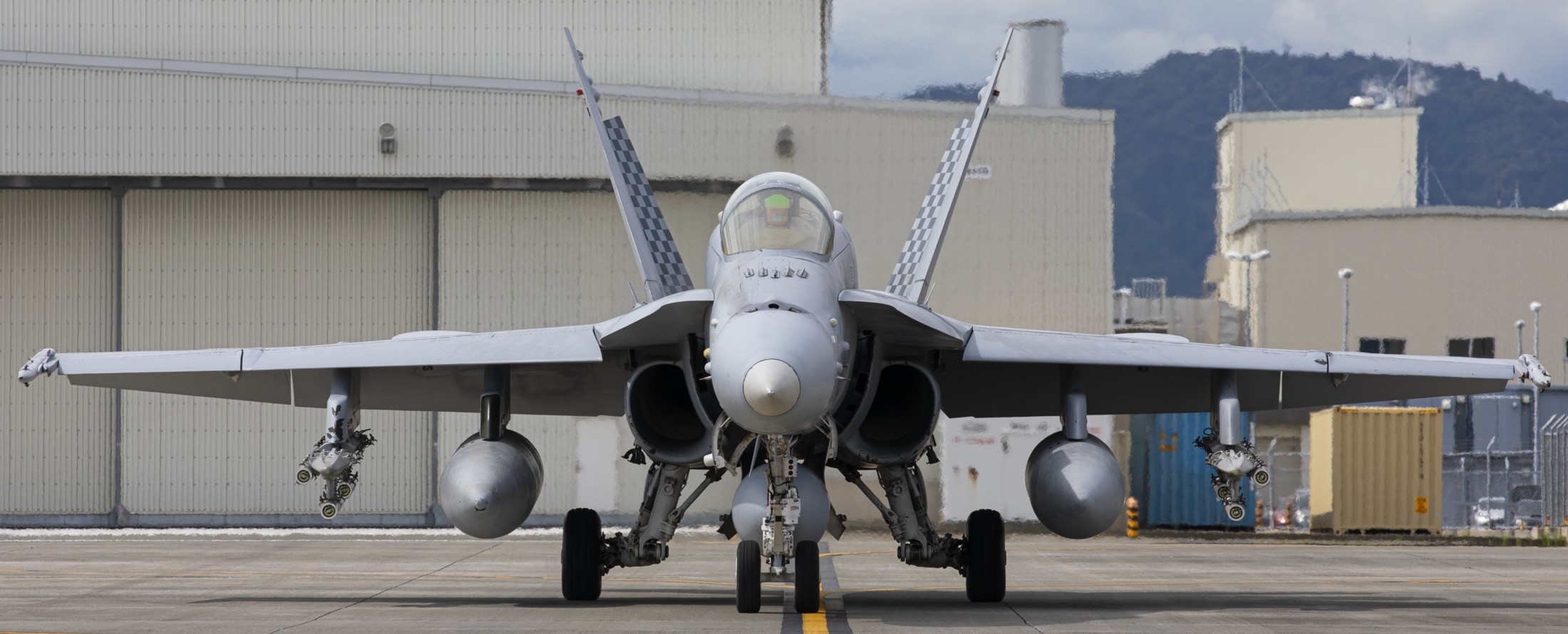 F/A-18C Hornet (VMFA(AW)-533) at MCAS Iwakuni, Japan - September 2022  F/A-18D Hornet (VMFA(AW)-533) at MCAS Iwakuni, Japan - September 2022 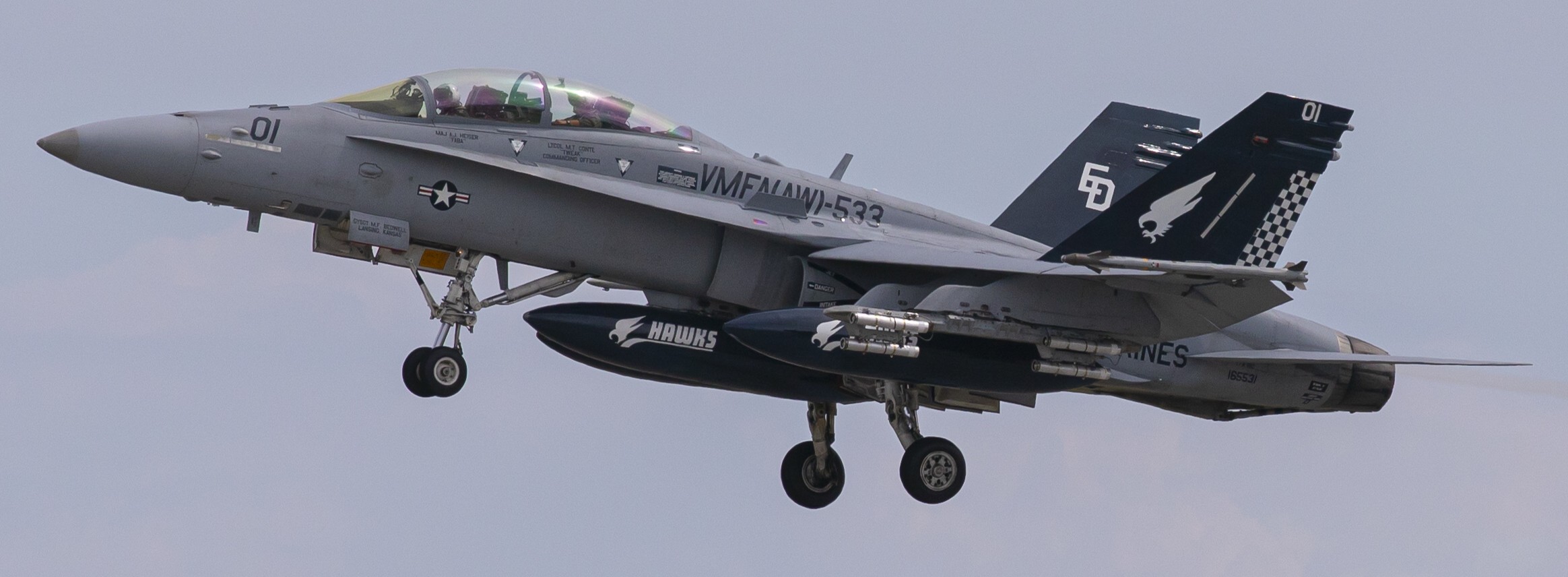 F/A-18D Hornet (VMFA(AW)-533) at MCAS Iwakuni, Japan - September 2022 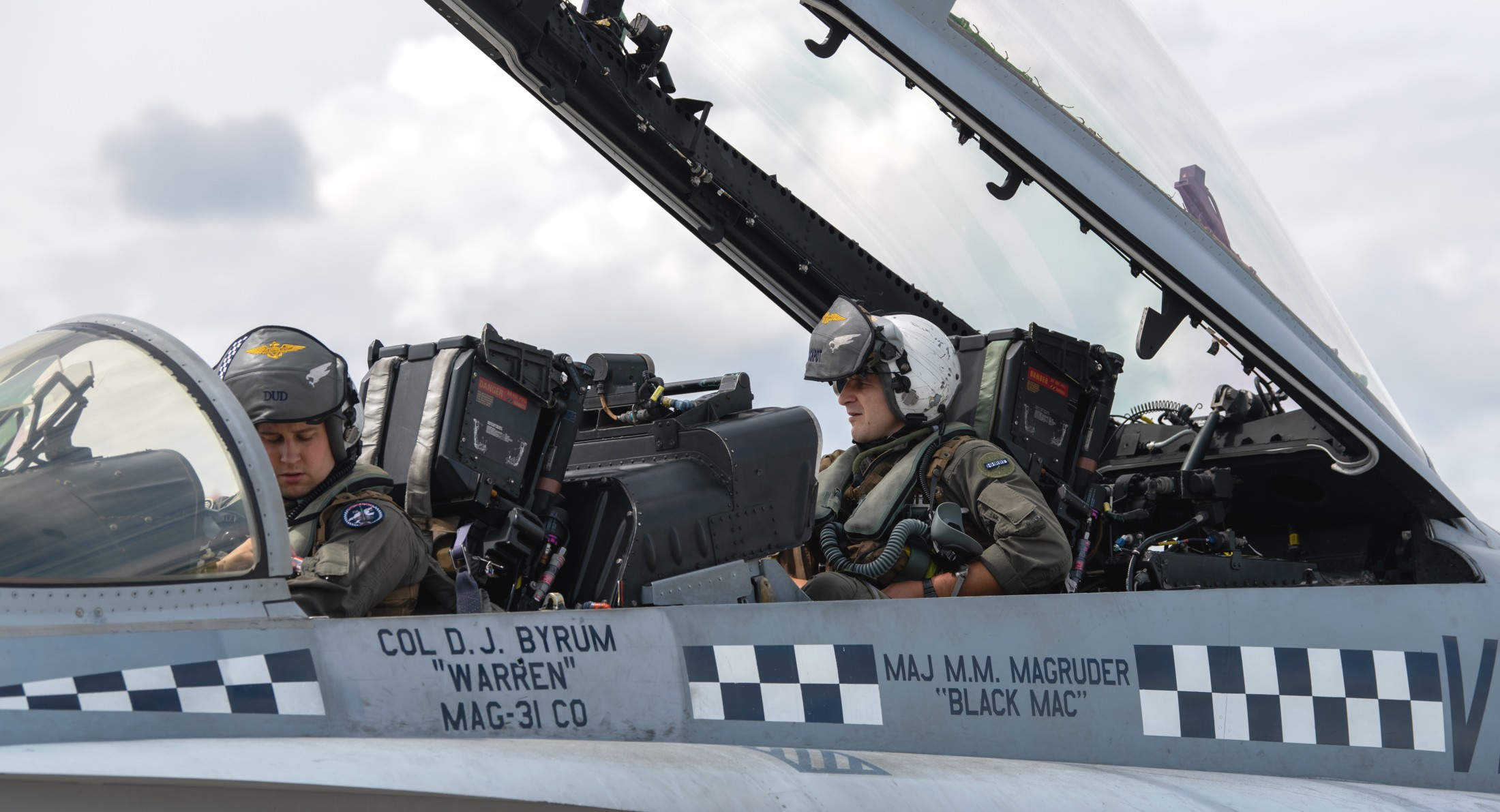 F/A-18D Hornet (VMFA(AW)-533) at MCAS Iwakuni, Japan - September 2022 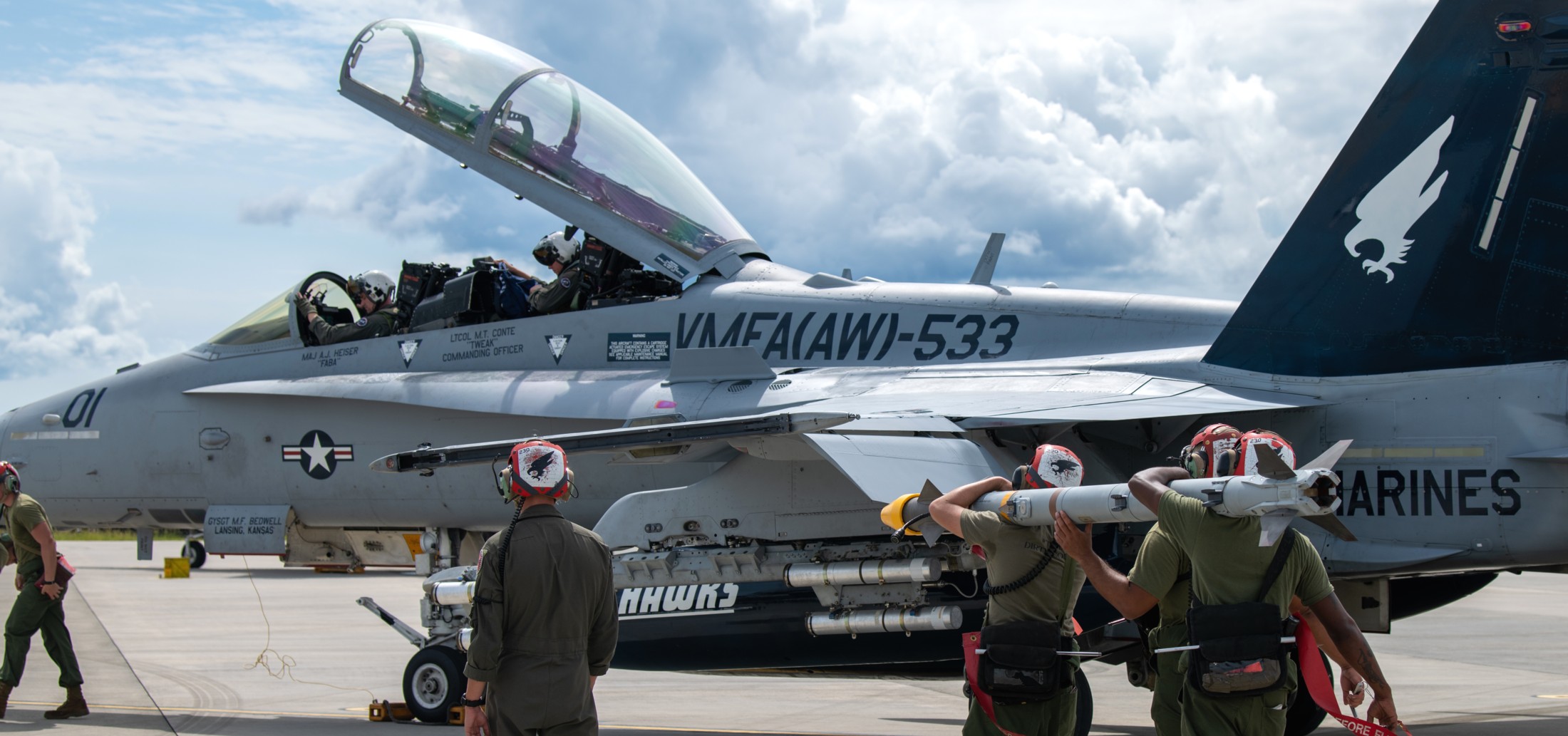 F/A-18D Hornet (VMFA(AW)-533) at MCAS Iwakuni, Japan - September 2022  F/A-18D Hornet (VMFA(AW)-533) at MCAS Iwakuni, Japan - September 2022 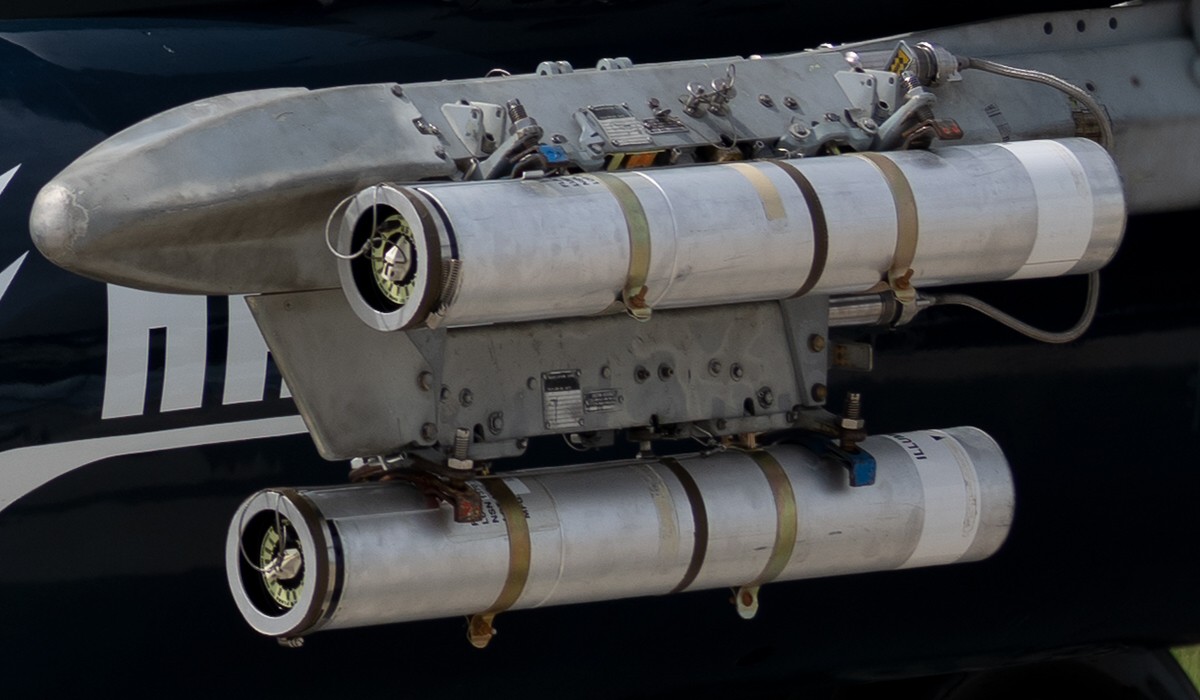 cutout: note the LUU-2 parachute illumination flares 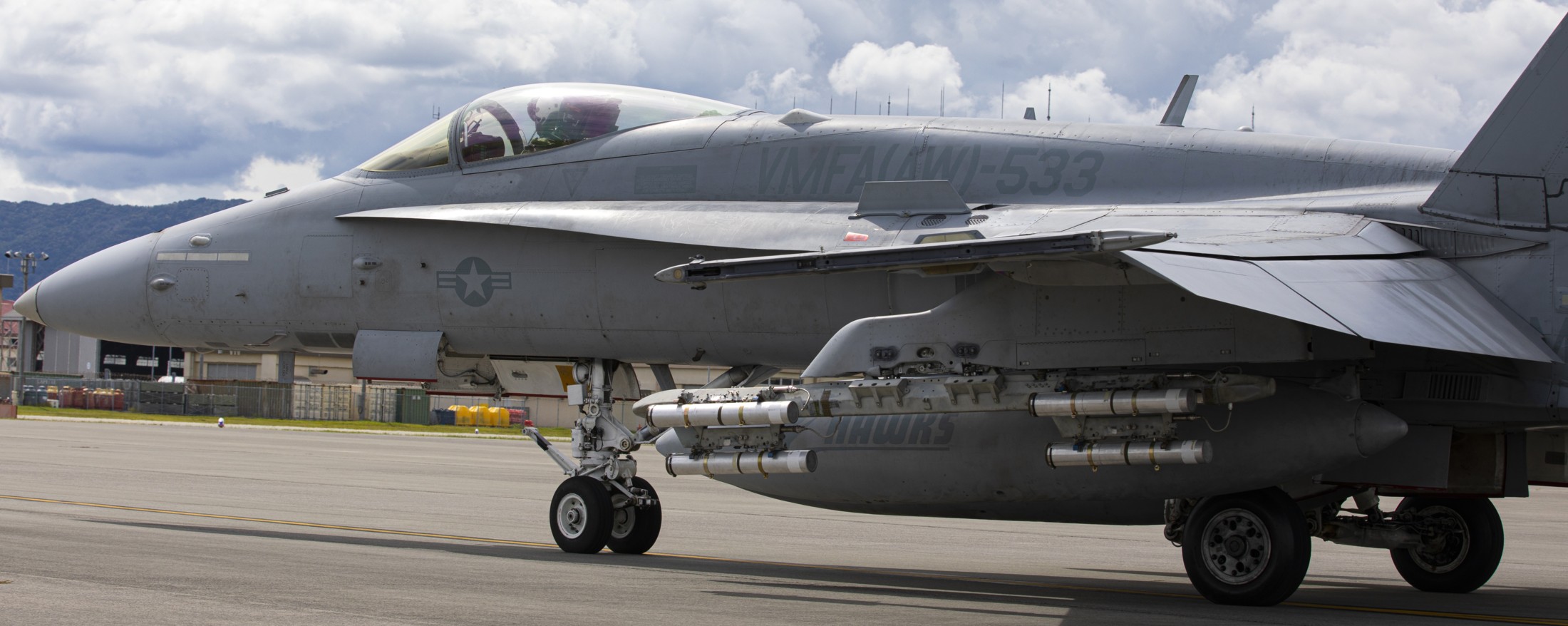 F/A-18C Hornet (VMFA(AW)-533) at MCAS Iwakuni, Japan - September 2022 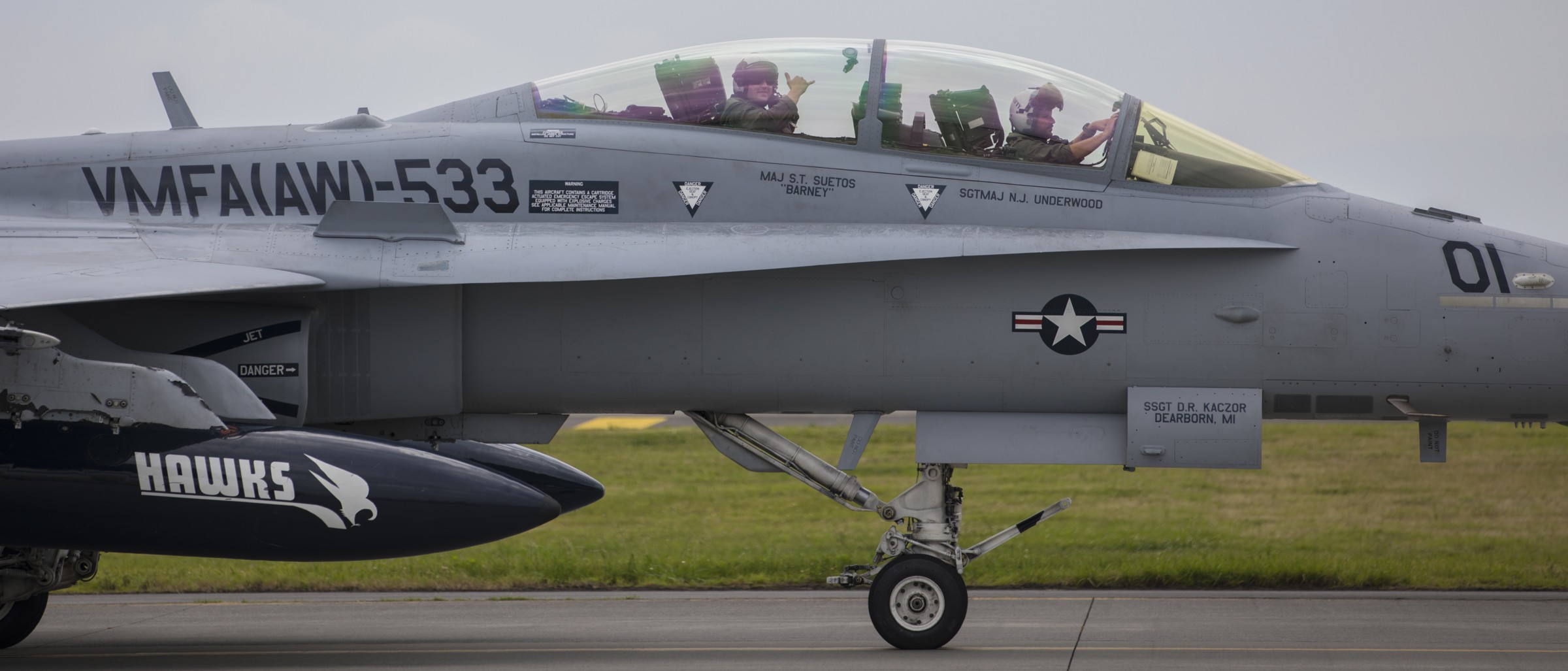 F/A-18D Hornet (VMFA(AW)-533) at MCAS Iwakuni, Japan - July 2022 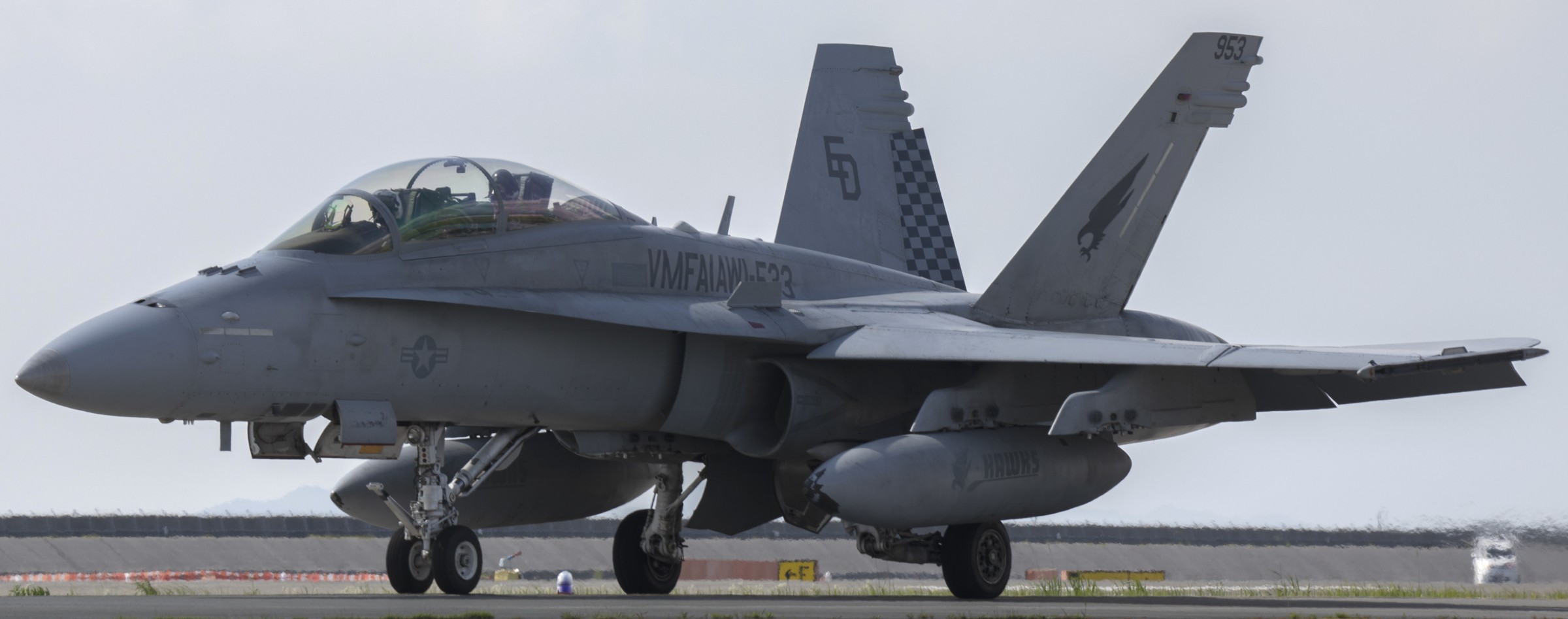 F/A-18D Hornet (VMFA(AW)-533) at MCAS Iwakuni, Japan - July 2022 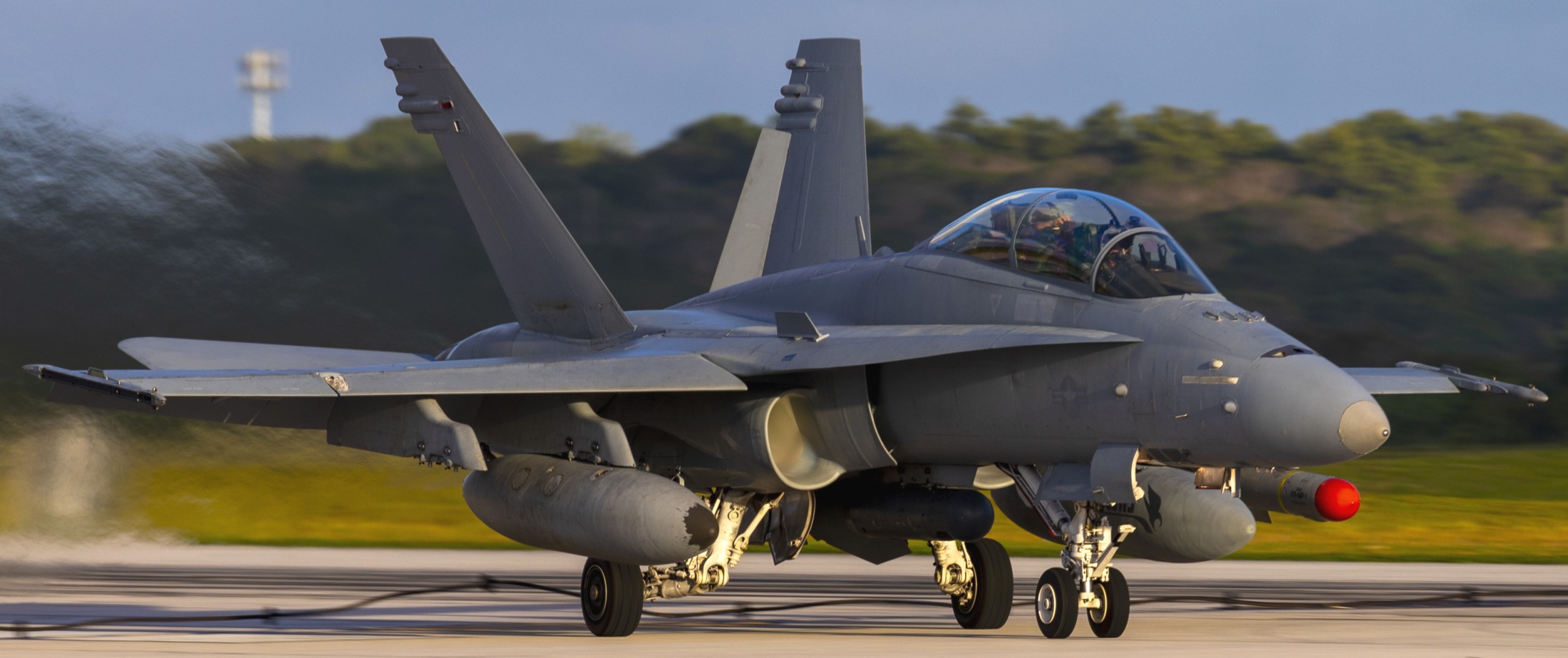 F/A-18D Hornet (VMFA(AW)-533), loaded with an AGM-84D Harpoon missile for a SINKEX during Exercise Valiant Shield - Andersen AFB, Guam - June 2022  F/A-18D Hornet (VMFA(AW)-533), loaded with an AGM-84D Harpoon missile for a SINKEX during Exercise Valiant Shield - Andersen AFB, Guam - June 2022 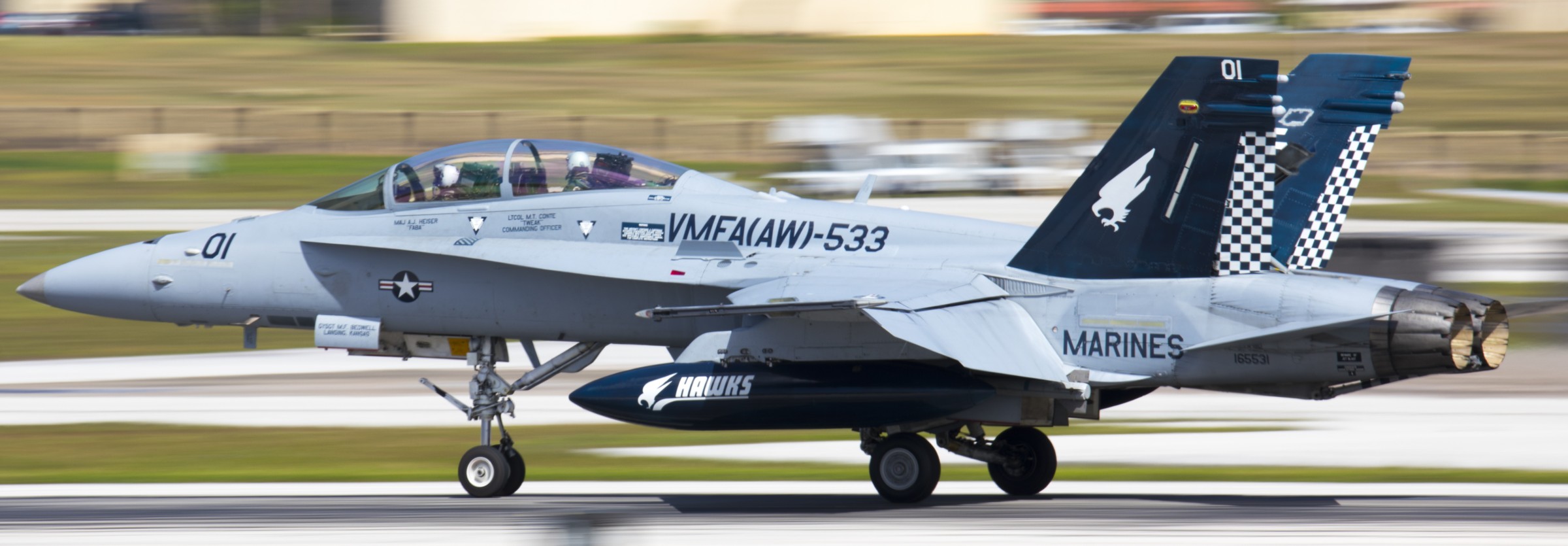 F/A-18D Hornet (VMFA(AW)-533) at Andersen AFB, Guam - June 2022  F/A-18D Hornet (VMFA(AW)-533) at Andersen AFB, Guam - June 2022 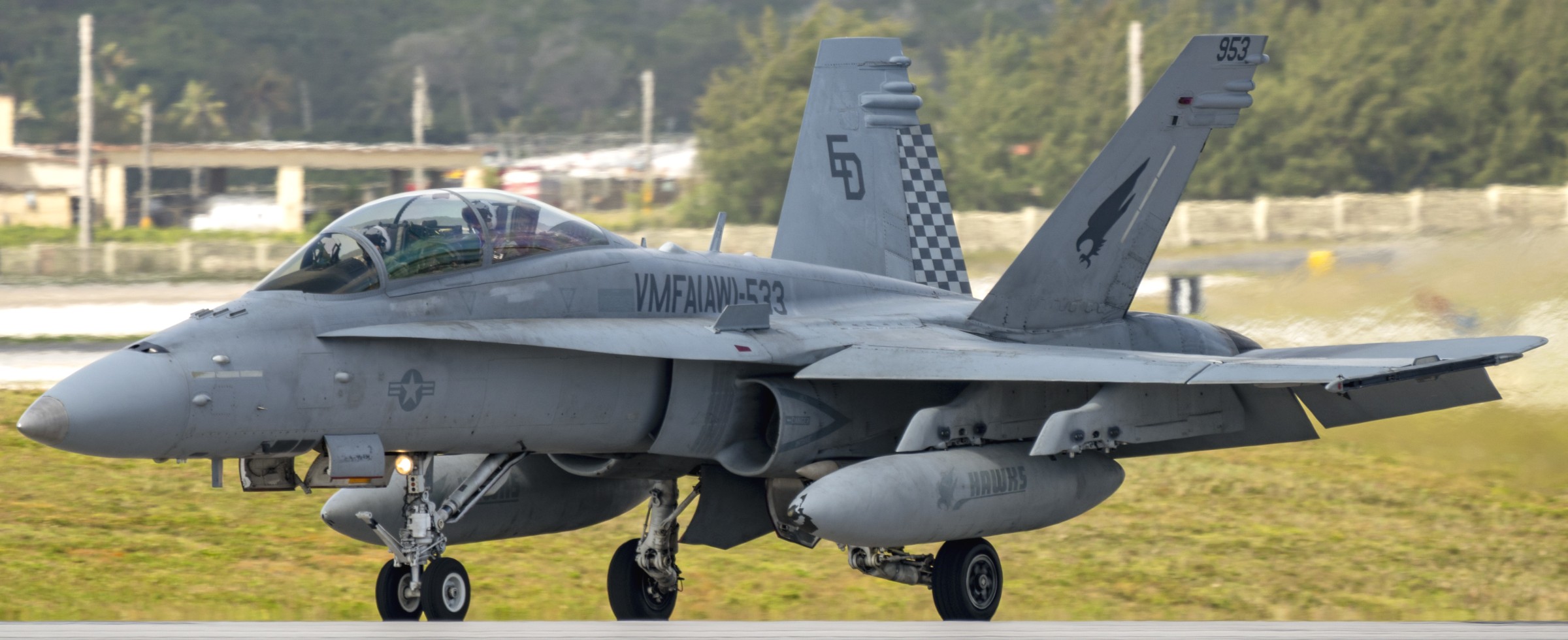 F/A-18D Hornet (VMFA(AW)-533) at Andersen AFB, Guam - June 2022  F/A-18D Hornet (VMFA(AW)-533) at Andersen AFB, Guam - June 2022 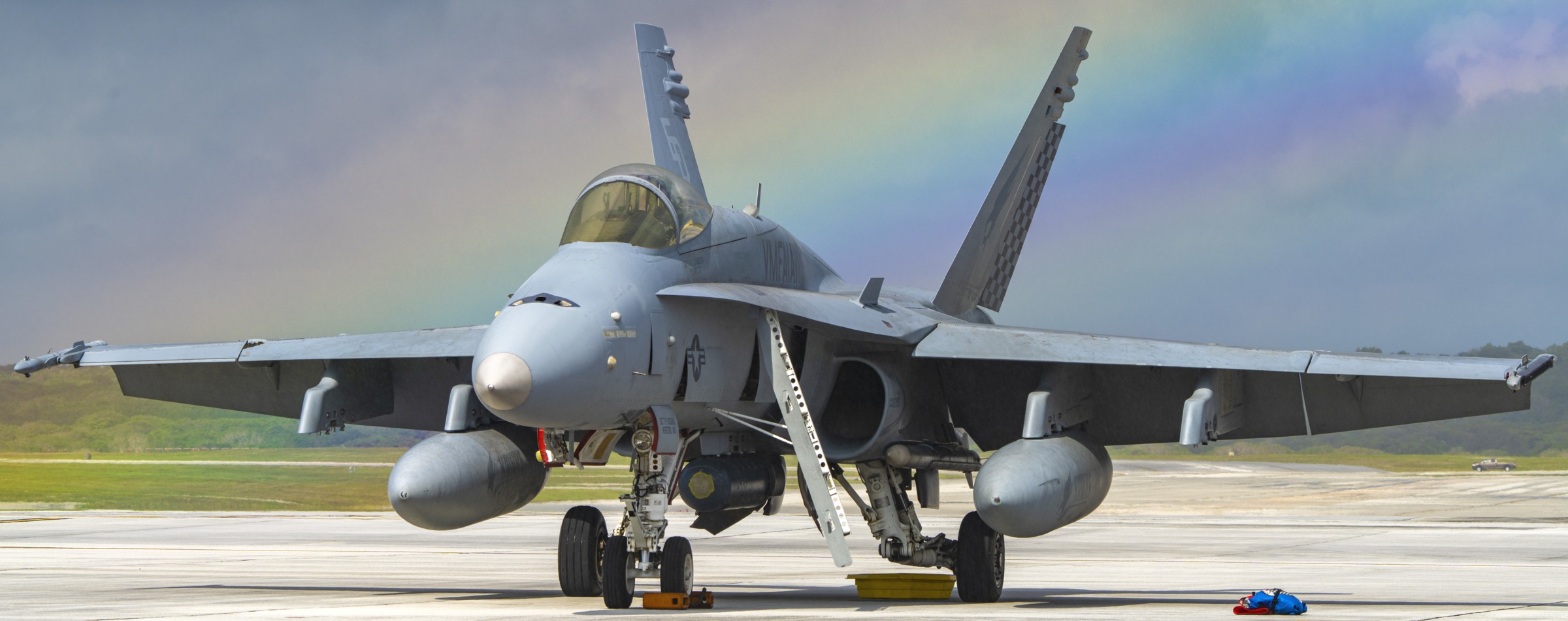 F/A-18C Hornet (VMFA(AW)-533) at Andersen AFB, Guam - June 2022 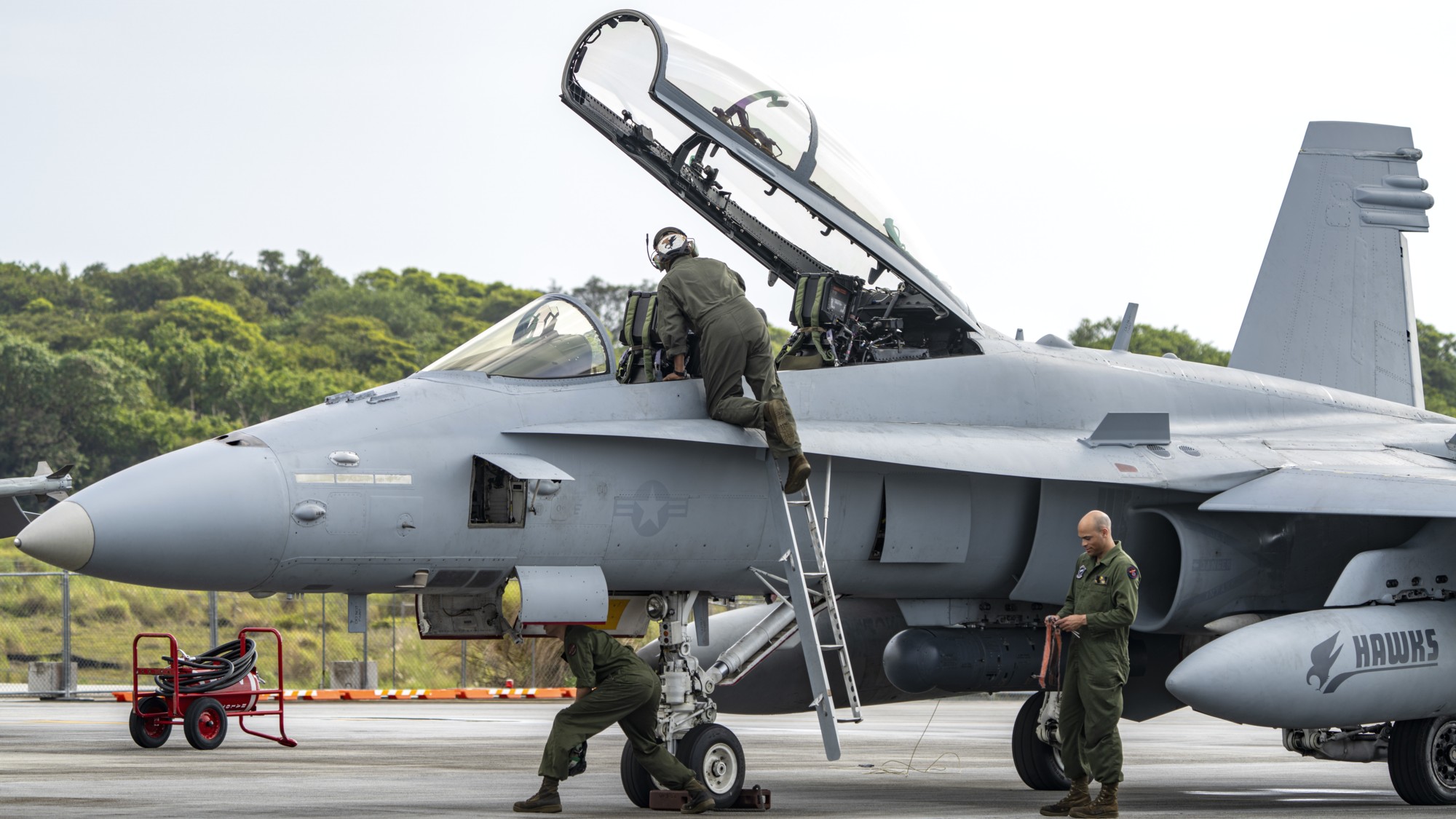 F/A-18D Hornet (VMFA(AW)-533) at Andersen AFB, Guam - June 2022 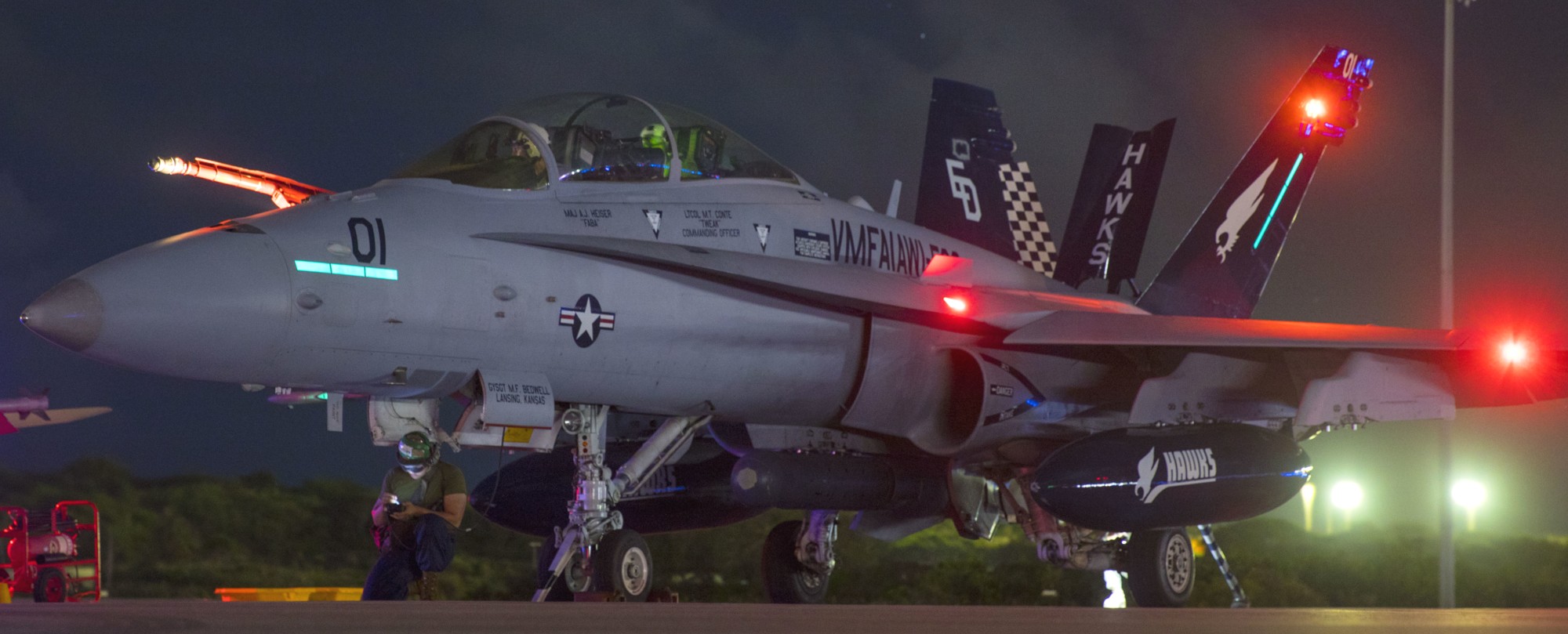 F/A-18D Hornet (VMFA(AW)-533) at Andersen AFB, Guam - June 2022 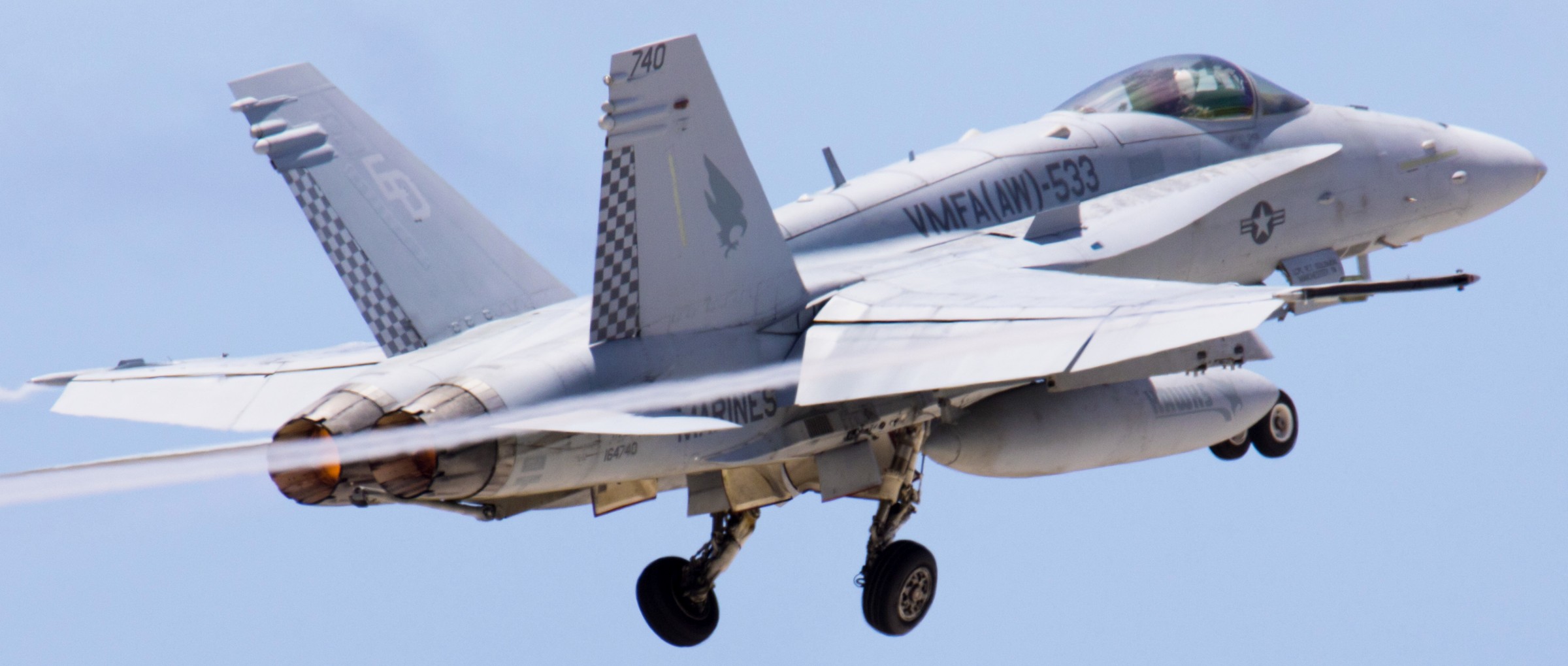 F/A-18C Hornet (VMFA(AW)-533) at Andersen AFB, Guam - June 2022  F/A-18C Hornet (VMFA(AW)-533) at Andersen AFB, Guam - June 2022 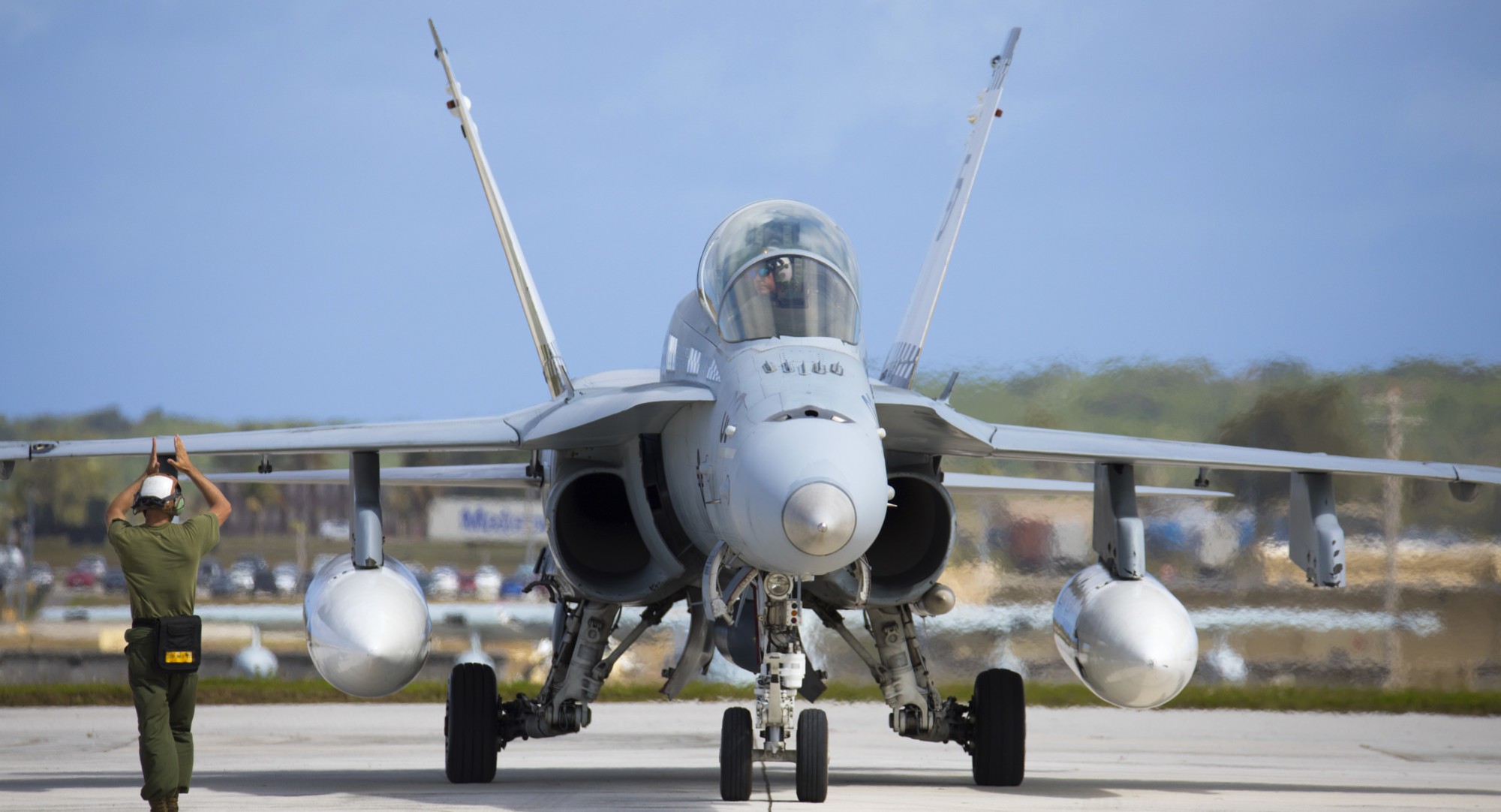 F/A-18D Hornet (VMFA(AW)-533) at Andersen AFB, Guam - June 2022  F/A-18D Hornet (VMFA(AW)-533) at Andersen AFB, Guam - June 2022 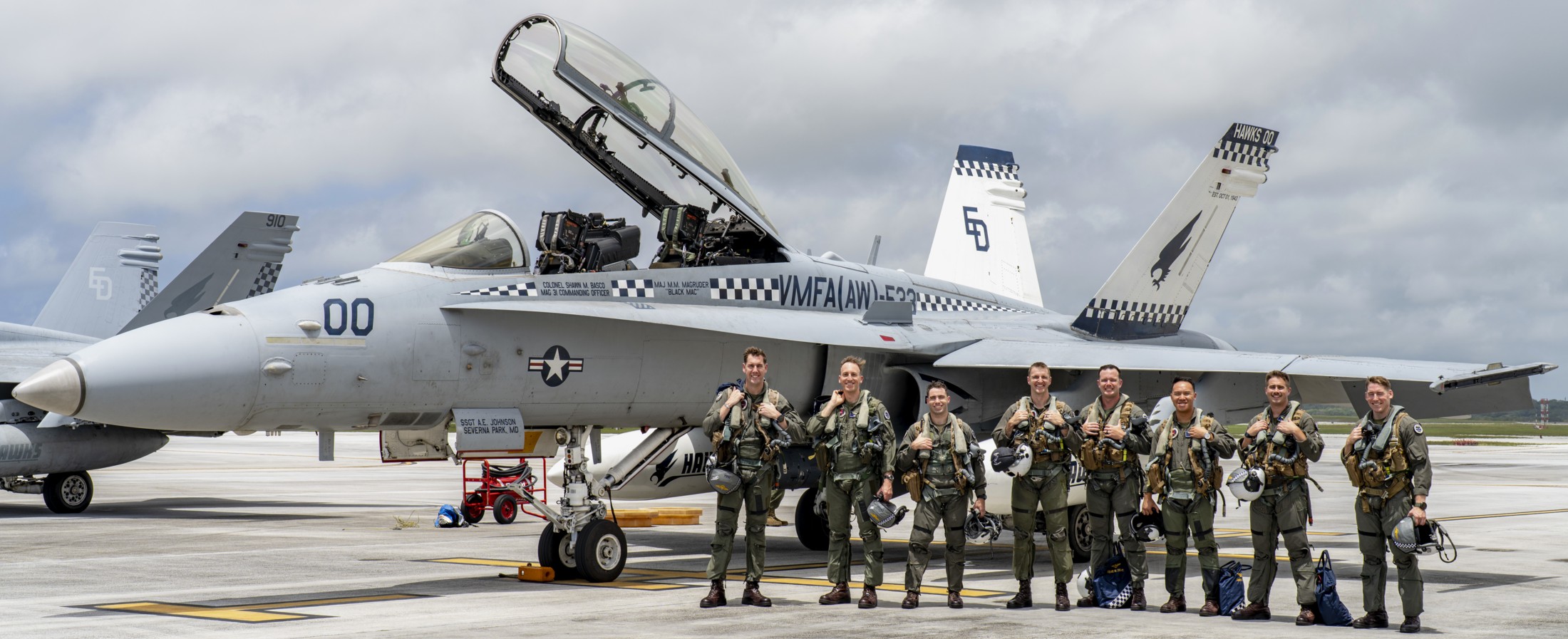 F/A-18D Hornet (VMFA(AW)-533) at Andersen AFB, Guam - June 2022 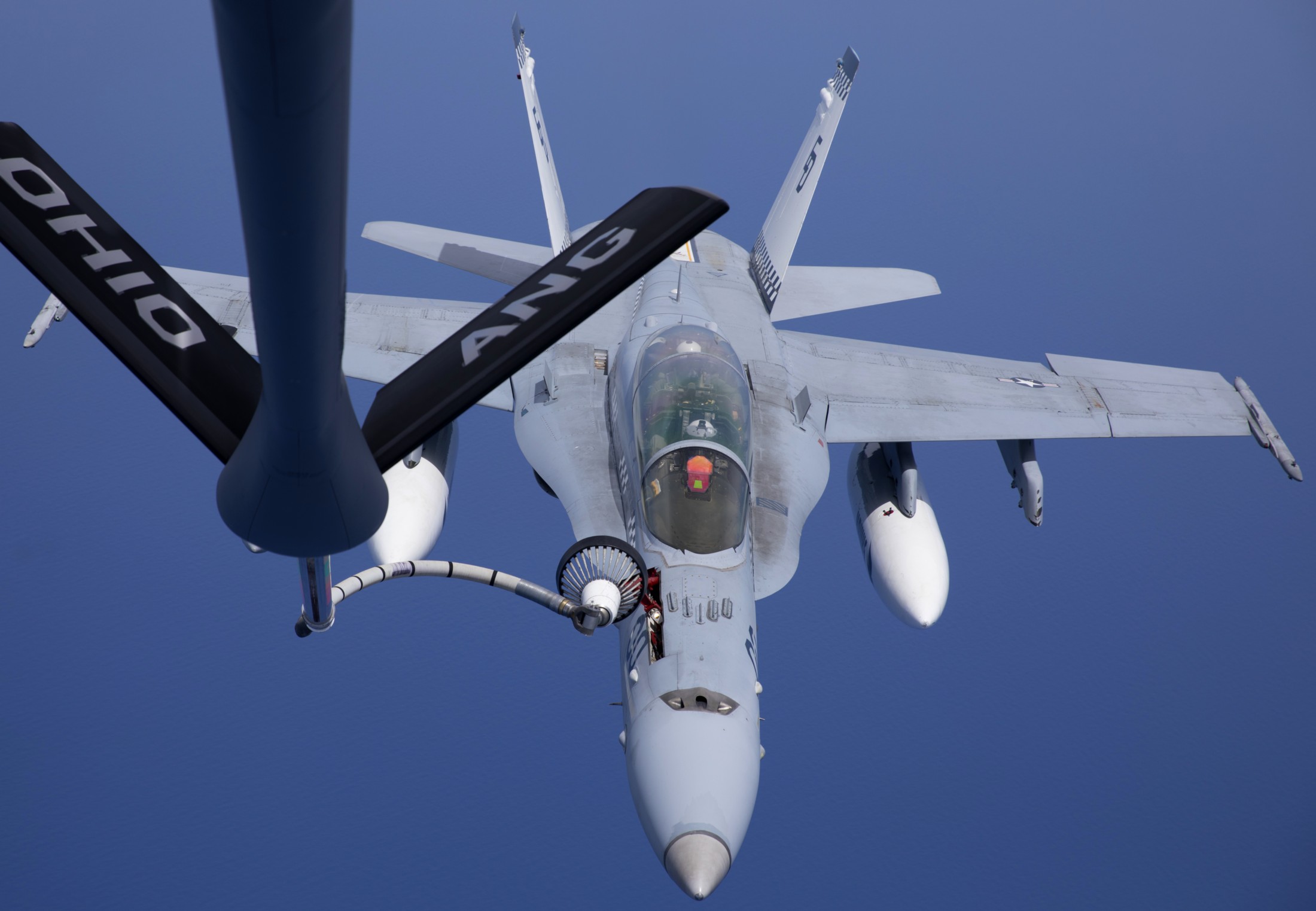 F/A-18D Hornet (VMFA(AW)-533) operating from Andersen AFB, Guam - May 2022 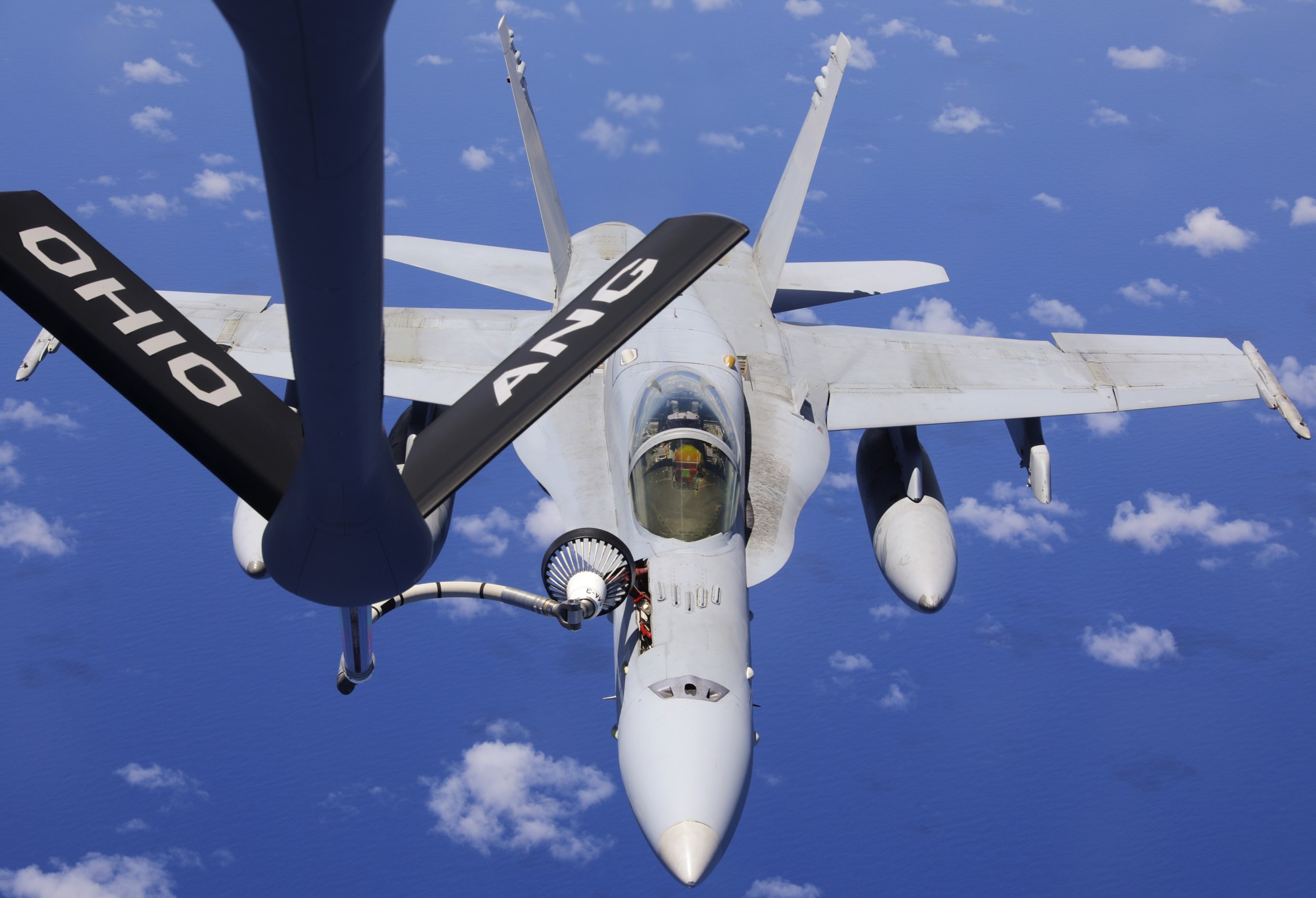 F/A-18C Hornet (VMFA(AW)-533) operating from Andersen AFB, Guam - May 2022  F/A-18C Hornet (VMFA(AW)-533) operating from Andersen AFB, Guam - May 2022  F/A-18D Hornet (VMFA(AW)-533) operating from Andersen AFB, Guam - May 2022  F/A-18D Hornet (VMFA(AW)-533) at Andersen AFB, Guam - May 2022 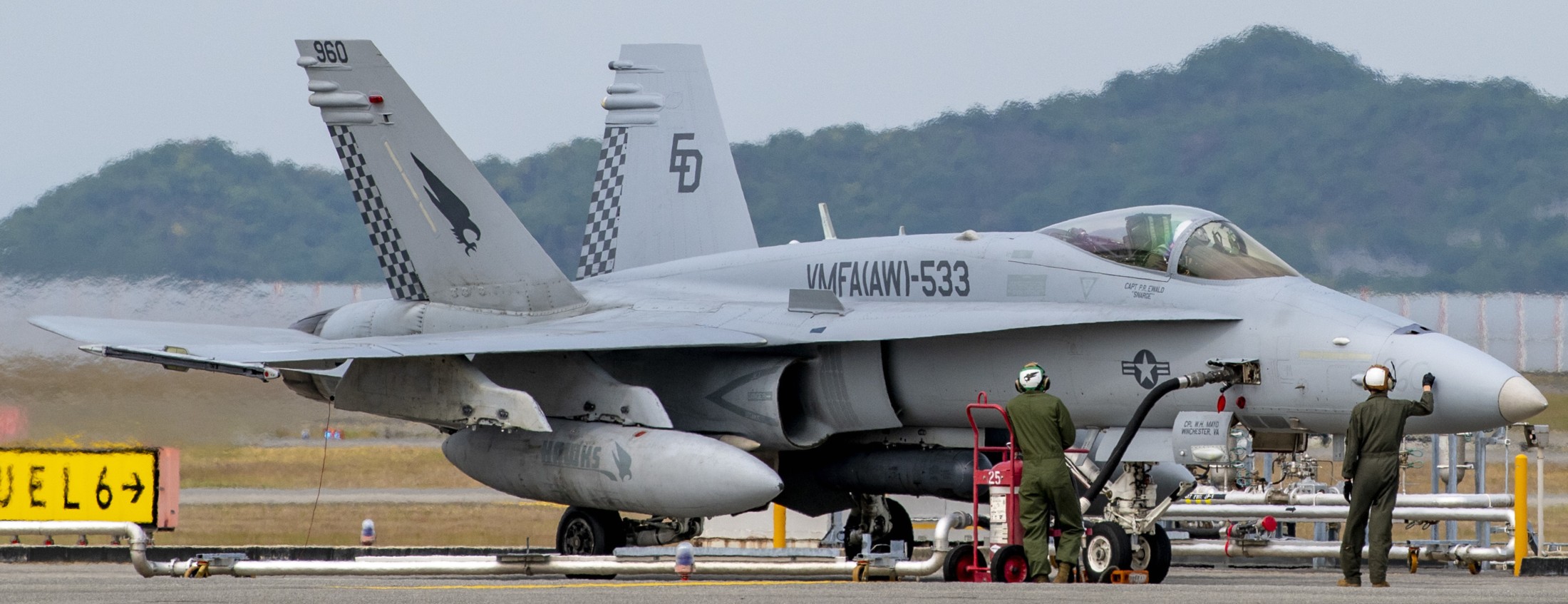 F/A-18C Hornet (VMFA(AW)-533) at MCAS Iwakuni, Japan - May 2022 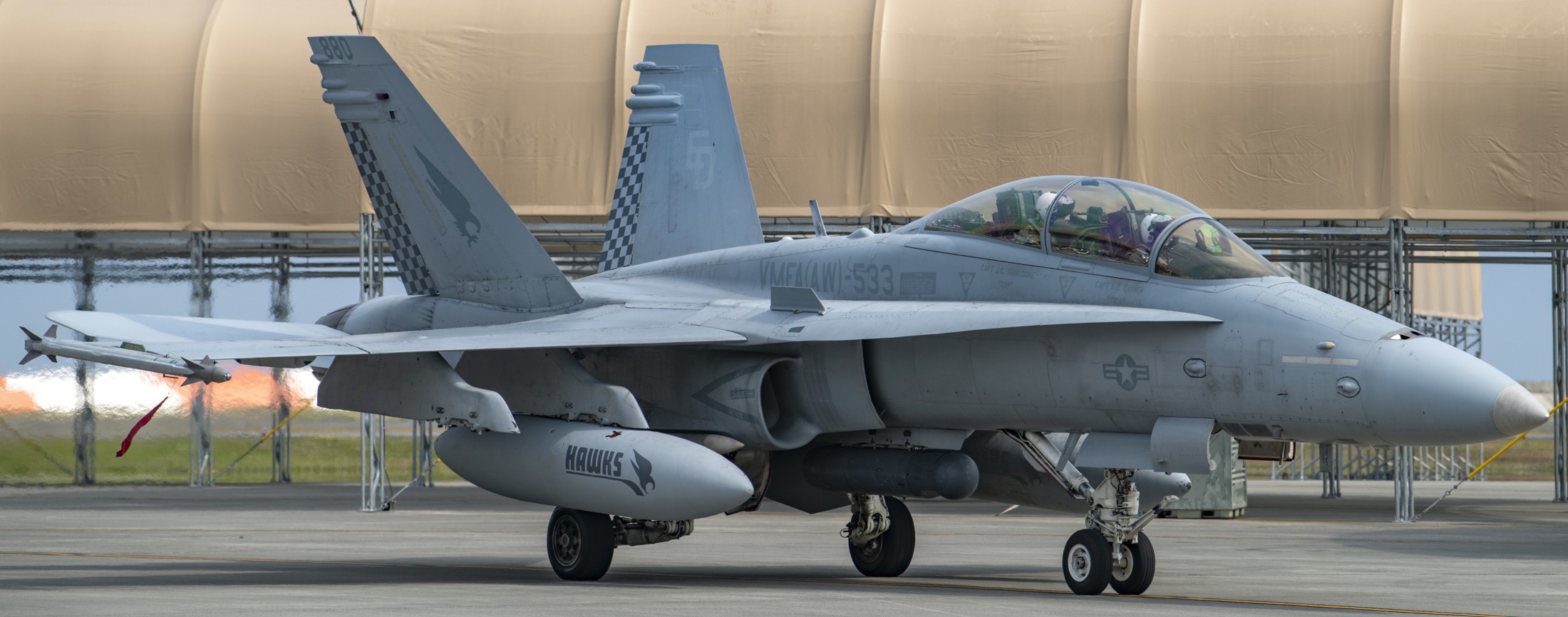 F/A-18D Hornet (VMFA(AW)-533) at MCAS Iwakuni, Japan - May 2022  F/A-18D+C Hornet (VMFA(AW)-533) at MCAS Iwakuni, Japan - May 2022 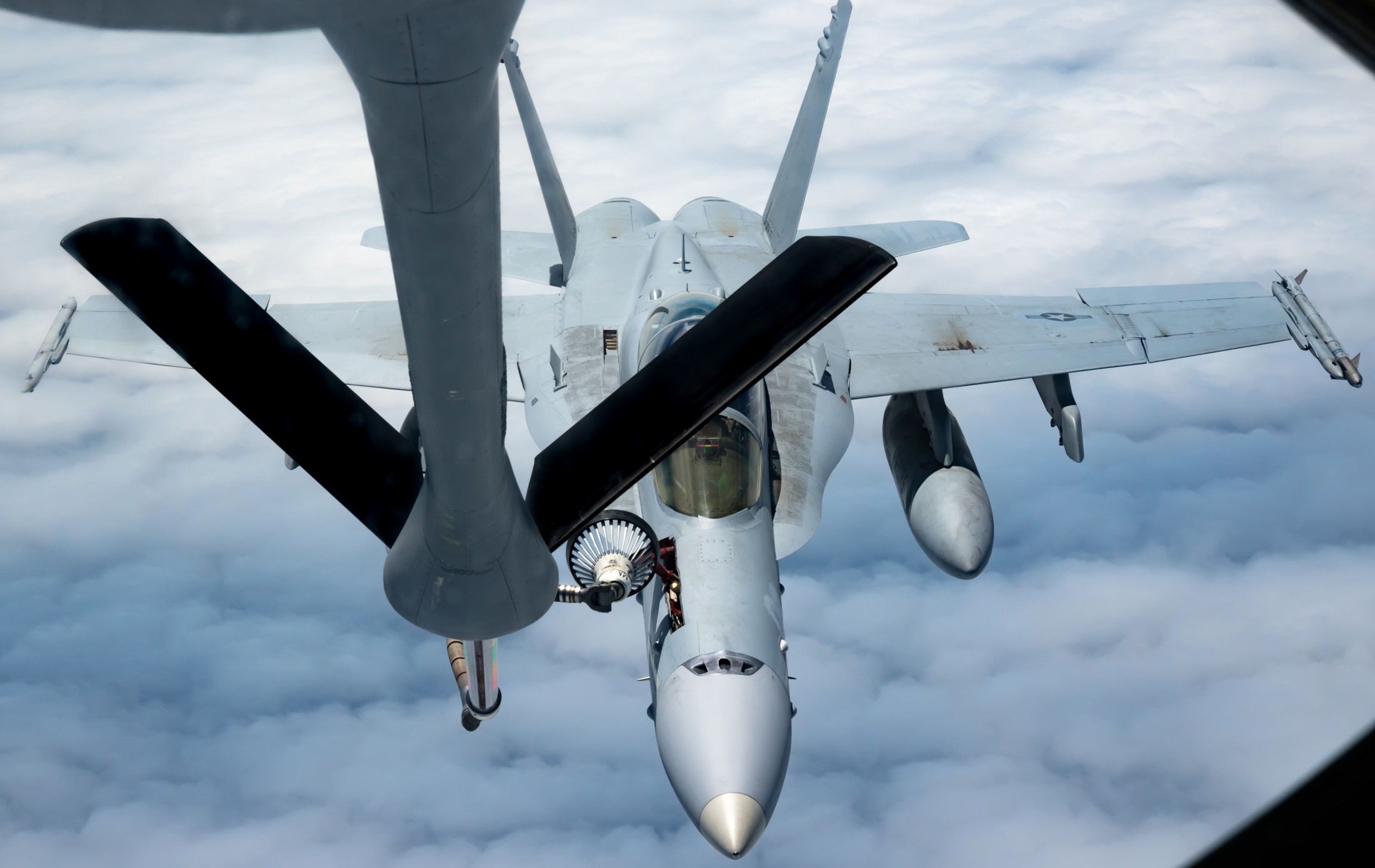 F/A-18D Hornet (VMFA(AW)-533) during aerial refueling over Japanese waters - April 2022 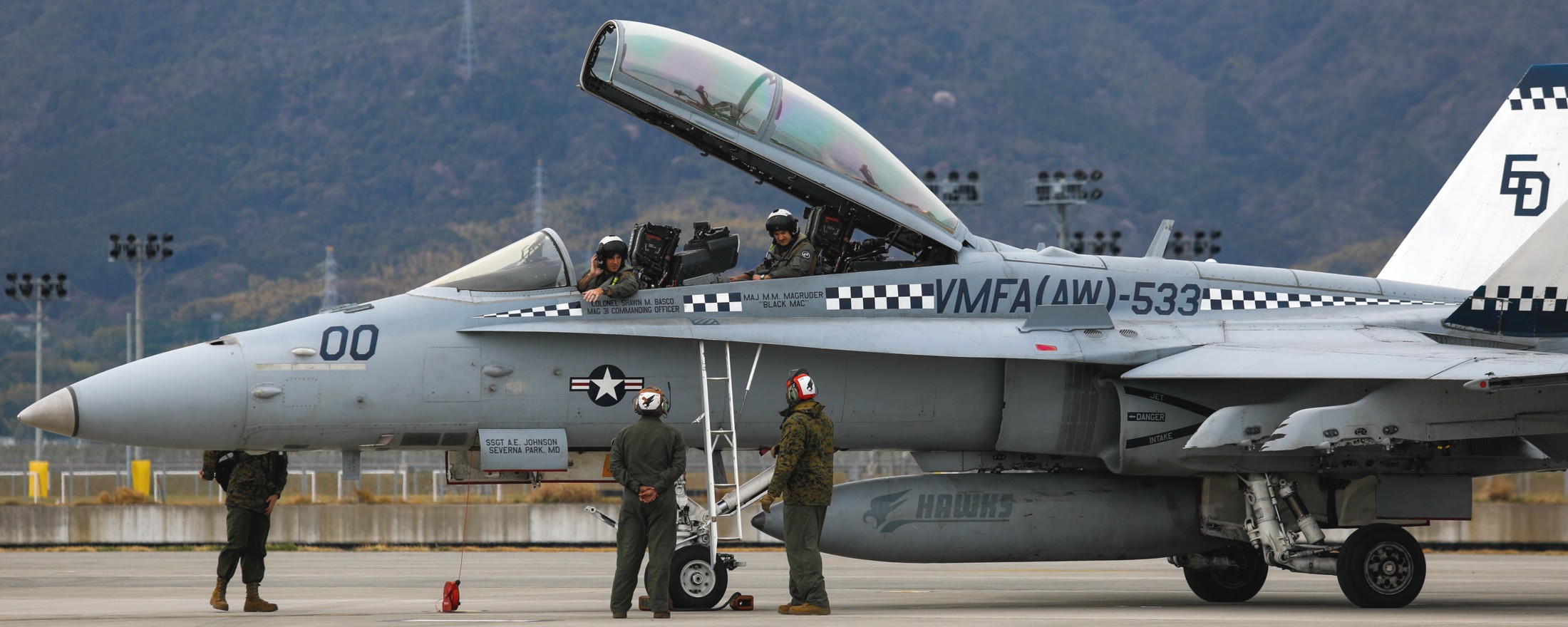 F/A-18D Hornet (VMFA(AW)-533) at MCAS Iwakuni, Japan - March 2022 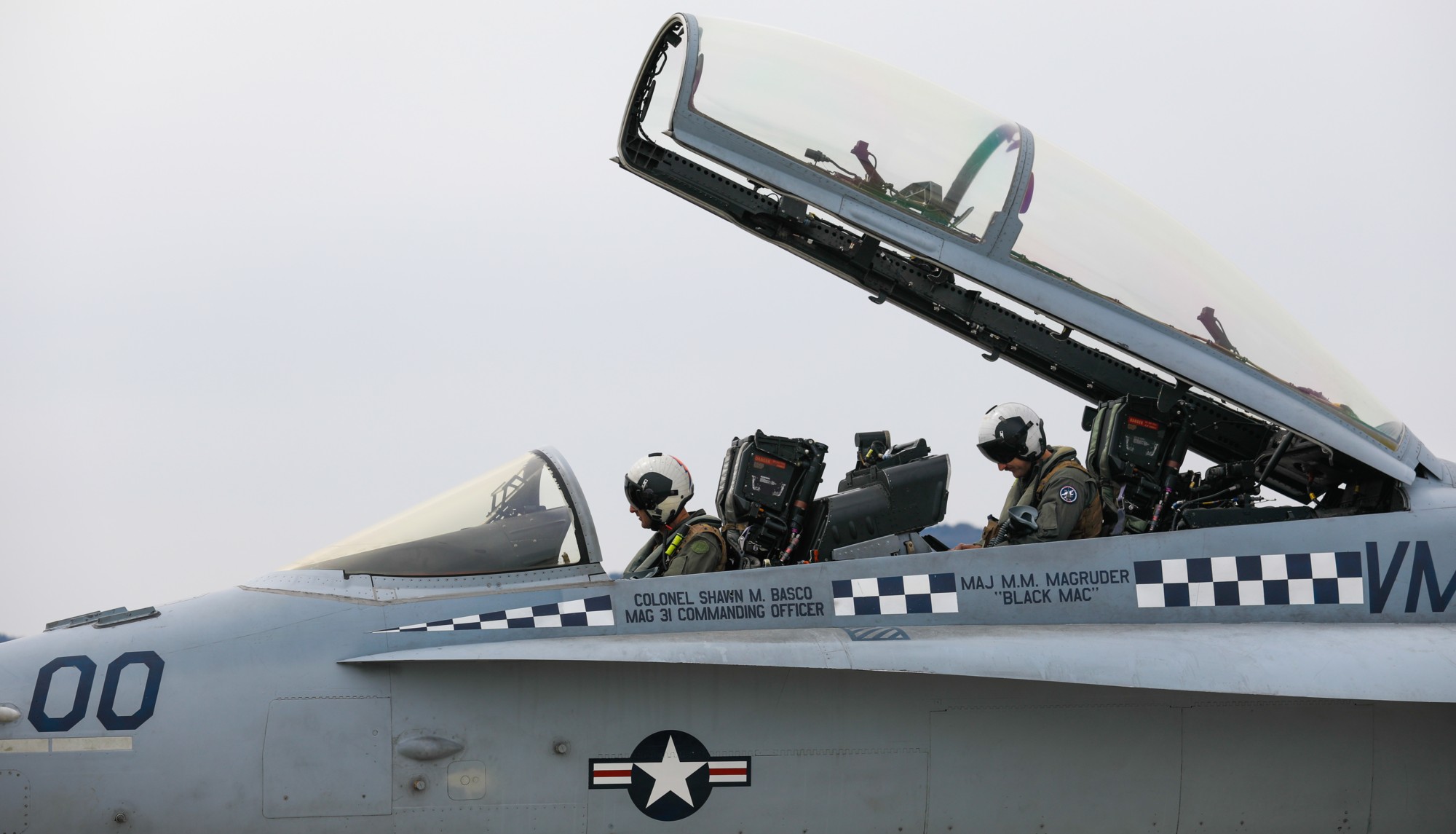 F/A-18D Hornet (VMFA(AW)-533) at MCAS Iwakuni, Japan - March 2022  AIM-120 AMRAAM missile loading exercise at MCAS Iwakuni, Japan - March 2022 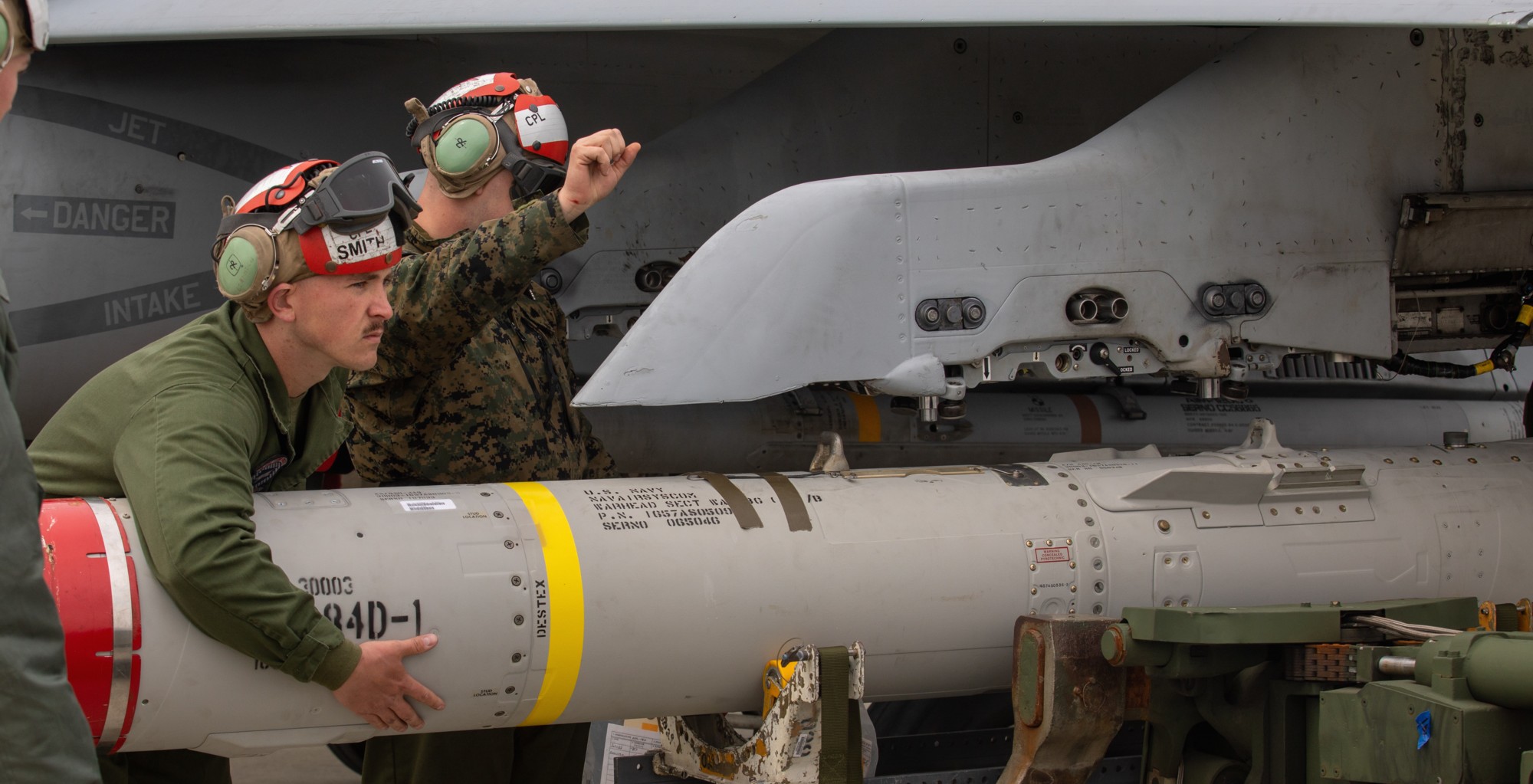 AGM-84D Harpoon missile loading exercise at MCAS Iwakuni, Japan - March 2022  F/A-18D Hornet (VMFA(AW)-533) during Exercise Red Flag at Nellis AFB, Nevada - August 2021  F/A-18D Hornet (VMFA(AW)-533) at MCAS Beaufort, South Carolina - June 2021  F/A-18D Hornet (VMFA(AW)-533) at MCAS Beaufort, South Carolina - June 2021  F/A-18D Hornet (VMFA(AW)-533) at MCAS Beaufort, South Carolina - June 2021  F/A-18D Hornet (VMFA(AW)-533) at MCAS Iwakuni, Japan - September 2020  F/A-18D Hornet (VMFA(AW)-533) at MCAS Iwakuni, Japan - September 2020  F/A-18D Hornet (VMFA(AW)-533) at MCAS Iwakuni, Japan - September 2020  F/A-18D Hornet (VMFA(AW)-533) at MCAS Iwakuni, Japan - September 2020  F/A-18D Hornet (VMFA(AW)-533) at MCAS Iwakuni, Japan - September 2020  F/A-18D Hornet (VMFA(AW)-533) at MCAS Iwakuni, Japan - September 2020  F/A-18D Hornet (VMFA(AW)-533) at MCAS Iwakuni, Japan - September 2020  F/A-18D Hornet (VMFA(AW)-533) at MCAS Iwakuni, Japan - September 2020  F/A-18D Hornet (VMFA(AW)-533) at MCAS Beaufort, South Carolina - June 2020  F/A-18D Hornet (VMFA(AW)-533) at MCAS Beaufort, South Carolina - March 2020  cutout  F/A-18D Hornet (VMFA(AW)-533) at Marine Corps Air Ground Combat Center Twentynine Palms, California - July 2019  F/A-18D Hornet (VMFA(AW)-533) at Marine Corps Air Ground Combat Center Twentynine Palms, California - July 2019  F/A-18D Hornet (VMFA(AW)-533) at Marine Corps Air Ground Combat Center Twentynine Palms, California - July 2019  F/A-18D Hornet (VMFA(AW)-533) at Marine Corps Air Ground Combat Center Twentynine Palms, California - July 2019  F/A-18D Hornet (VMFA(AW)-533) at Marine Corps Air Ground Combat Center Twentynine Palms, California - July 2019  F/A-18D Hornet (VMFA(AW)-533) at Marine Corps Air Ground Combat Center Twentynine Palms, California - July 2019  F/A-18D Hornet (VMFA(AW)-533) at Marine Corps Air Ground Combat Center Twentynine Palms, California - July 2019  F/A-18D Hornet (VMFA(AW)-533) at Marine Corps Air Ground Combat Center Twentynine Palms, California - July 2019  F/A-18D Hornet (VMFA(AW)-533) at Marine Corps Air Ground Combat Center Twentynine Palms, California - July 2019  F/A-18D Hornet (VMFA(AW)-533) at Marine Corps Air Ground Combat Center Twentynine Palms, California - July 2019  F/A-18D Hornet (VMFA(AW)-533) at Marine Corps Air Ground Combat Center Twentynine Palms, California - July 2019  F/A-18D Hornet (VMFA(AW)-533) at Marine Corps Air Ground Combat Center Twentynine Palms, California - July 2019  F/A-18D Hornet (VMFA(AW)-533) at Marine Corps Air Ground Combat Center Twentynine Palms, California - July 2019  F/A-18D Hornet (VMFA(AW)-533) at Marine Corps Air Ground Combat Center Twentynine Palms, California - July 2019  F/A-18D Hornet (VMFA(AW)-533) at Marine Corps Air Ground Combat Center Twentynine Palms, California - July 2019  F/A-18D Hornet (VMFA(AW)-533) at Marine Corps Air Ground Combat Center Twentynine Palms, California - July 2019  F/A-18D Hornet (VMFA(AW)-533) at Andersen AFB, Guam - September 2018  F/A-18D Hornet (VMFA(AW)-533) at Andersen AFB, Guam - September 2018  F/A-18D Hornet (VMFA(AW)-533) at Andersen AFB, Guam - September 2018  F/A-18D Hornet (VMFA(AW)-533) at Andersen AFB, Guam - September 2018  F/A-18D Hornet (VMFA(AW)-533) at MCB Hawaii, Kaneohe Bay - June 2018  F/A-18D Hornet (VMFA(AW)-533) at MCB Hawaii, Kaneohe Bay - June 2018  F/A-18D Hornet (VMFA(AW)-533) at MCB Hawaii, Kaneohe Bay - June 2018  F/A-18D Hornet (VMFA(AW)-533) at MCB Hawaii, Kaneohe Bay - June 2018  F/A-18D Hornet (VMFA(AW)-533) at MCB Hawaii, Kaneohe Bay - June 2018  F/A-18D Hornet (VMFA(AW)-533) at Gwangju Air Base, South Korea - May 2018  F/A-18D Hornet (VMFA(AW)-533) at Gwangju Air Base, South Korea - May 2018  F/A-18D Hornet (VMFA(AW)-533) - September 2017  F/A-18D Hornet (VMFA(AW)-533) during Exercise Jaded Thunder at Salina Airport, Kansas - February 2017  F/A-18D Hornet (VMFA(AW)-533) at MCAS Beaufort, South Carolina - January 2017  F/A-18D Hornet (VMFA(AW)-533) - CENTCOM AOR - October 2016  F/A-18D Hornet (VMFA(AW)-533) - CENTCOM AOR - October 2016  F/A-18D Hornet (VMFA(AW)-533) - CENTCOM AOR - October 2016  F/A-18D Hornet (VMFA(AW)-533) - CENTCOM AOR - October 2016  F/A-18D Hornet (VMFA(AW)-533) - CENTCOM AOR - October 2016  F/A-18D Hornet (VMFA(AW)-533) - CENTCOM AOR - October 2016  F/A-18D Hornet (VMFA(AW)-533) - CENTCOM AOR - October 2016  F/A-18D Hornet (VMFA(AW)-533) - CENTCOM AOR - October 2016  F/A-18D Hornet (VMFA(AW)-533) - CENTCOM AOR - October 2016  F/A-18D Hornet (VMFA(AW)-533) during inflight refueling with a KC-130J Hercules (VMGR-352) - October 2016  F/A-18D Hornet (VMFA(AW)-533) - CENTCOM AOR - June 2016  F/A-18D Hornet (VMFA(AW)-533) - CENTCOM AOR - June 2016  F/A-18D Hornet (VMFA(AW)-533) - CENTCOM AOR - June 2016  F/A-18D Hornet (VMFA(AW)-533) - CENTCOM AOR - June 2016  F/A-18D Hornet (VMFA(AW)-533) - CENTCOM AOR - June 2016  F/A-18D Hornet (VMFA(AW)-533) - CENTCOM AOR - June 2016  F/A-18D Hornet (VMFA(AW)-533) - CENTCOM AOR - June 2016  F/A-18D Hornet (VMFA(AW)-533) - CENTCOM AOR - June 2016  F/A-18D Hornet (VMFA(AW)-533) during Exercise Cobra Gold - February 2015  F/A-18D Hornet (VMFA(AW)-533) at MCAS Futenma, Okinawa, Japan - January 2015  F/A-18D Hornet (VMFA(AW)-533) over Okinawa, Japan - January 2015  F/A-18D Hornet (VMFA(AW)-533) over Okinawa, Japan - January 2015  F/A-18D Hornet (VMFA(AW)-533) at Osan Air Base, Korea - October 2014  cutout  F/A-18D Hornet (VMFA(AW)-533) at Osan Air Base, Korea - October 2014  F/A-18D Hornet (VMFA(AW)-533) at Osan Air Base, Korea - October 2014  F/A-18D Hornet (VMFA(AW)-533) at Osan Air Base, Korea - October 2014  F/A-18D Hornet (VMFA(AW)-533) during Exercise Valiant Shield at Andersen AFB, Guam - September 2014  F/A-18D Hornet (VMFA(AW)-533) during Exercise Valiant Shield at Andersen AFB, Guam - September 2014  F/A-18D Hornet (VMFA(AW)-533) in special paintings at Andersen AFB, Guam - September 2014  F/A-18D Hornet (VMFA(AW)-533) during Exercise Valiant Shield - September 2014  F/A-18D Hornet (VMFA(AW)-533) at MCAS Beaufort, South Carolina - September 2014  F/A-18D Hornet (VMFA(AW)-533) at MCAS Beaufort, South Carolina - August 2014  F/A-18D Hornet (VMFA(AW)-533) over Eglin AFB, Florida - January 2012  F/A-18D Hornet (VMFA(AW)-533) at Eglin AFB, Florida - January 2012  F/A-18D Hornet (VMFA(AW)-533) at Kadena Air Base, Okinawa, Japan - June 2011  F/A-18D Hornet (VMFA(AW)-533) at Kadena Air Base, Okinawa, Japan - June 2011  F/A-18D Hornet (VMFA(AW)-533) at Kadena Air Base, Okinawa, Japan - June 2011  F/A-18D Hornet (VMFA(AW)-533) at MCAS Beaufort, South Carolina - February 2010  F/A-18D Hornet (VMFA(AW)-533) at Al Asad Air Base, Iraq - July 2006  F/A-18D Hornet (VMFA(AW)-533) at Al Asad Air Base, Iraq - July 2006  change of command ceremony at MCAS Beaufort, South Carolina - May 2004  change of command ceremony at MCAS Beaufort, South Carolina - May 2004  F/A-18D Hornet (VMFA(AW)-533) returning to MCAS Beaufort, South Carolina after a deployment in support of Operation Iraqi Freedom - May 2003  F/A-18D Hornet (VMFA(AW)-533) returning to MCAS Beaufort, South Carolina after a deployment in support of Operation Iraqi Freedom - May 2003  F/A-18D Hornet (VMFA(AW)-533) returning to MCAS Beaufort, South Carolina after a deployment in support of Operation Iraqi Freedom - May 2003  F/A-18D Hornet (VMFA(AW)-533) returning to MCAS Beaufort, South Carolina after a deployment in support of Operation Iraqi Freedom - May 2003  F/A-18D Hornet (VMFA(AW)-533) during Exercise Tandem Thrust - Australia - May 2001  F/A-18D Hornet (VMFA(AW)-533) during Exercise Beachcrest - December 1998  F/A-18D Hornet (VMFA(AW)-533) at NAS Fallon, Nevada - June 1993  F/A-18D Hornet (VMFA(AW)-533) at NAS Fallon, Nevada - June 1993  F/A-18D Hornet (VMFA(AW)-533) at NAF Washington (Andrews), Maryland - April 1993 VMA(AW)-533 Hawks 1965-92  Grumman A-6E Intruder (VMA(AW)-533) at NAF Washington (Andrews), Maryland - May 1991  Grumman A-6E Intruder (VMA(AW)-533) at NAS Fallon, Nevada - March 1988  Grumman A-6E Intruder (VMA(AW)-533 / CVW-3) aboard USS John F. Kennedy (CV 67) - March 1986  Grumman A-6E Intruder (VMA(AW)-533 / CVW-3) aboard USS John F. Kennedy (CV 67) - March 1986  Grumman A-6E Intruder (VMA(AW)-533 / CVW-3) aboard USS John F. Kennedy (CV 67) - March 1986  Grumman A-6E Intruder (VMA(AW)-533) - 1982  Grumman A-6E Intruder (VMA(AW)-533) at MCAS Cherry Point, North Carolina - April 1979  Grumman A-6E Intruder (VMA(AW)-533) at MCAS Cherry Point, North Carolina - April 1979  Grumman A-6E Intruder (VMA(AW)-533) at MCAS Cherry Point, North Carolina - April 1979  Grumman A-6E Intruder (VMA(AW)-533) aboard USS America (CV 66) - 1978  Grumman A-6A Intruder (VMA(AW)-533) with F-4 Phantoms during a bombing mission over Cambodia - circa 1973  Grumman A-6A Intruder (VMA(AW)-533) - Vietnam War VMA-533 Hawks 1957-65  Douglas A-4C Skyhawks (VMA-533) during inflight refueling - 1960's  Douglas A4D-2N Skyhawks (VMA-533) during inflight refueling with an USMC Lockheed GV-1 Hercules (C-130F) - March 1961 VMF-533 Nighthawks 1953-57  McDonnell F2H-4 Banshee (VMF-533 / ATG-182) embarked on USS Lake Champlain (CVA 39) - 1957  McDonnell F2H-4 Banshee (VMF-533 / ATG-182) aboard USS Lake Champlain (CVA 39) - 1957 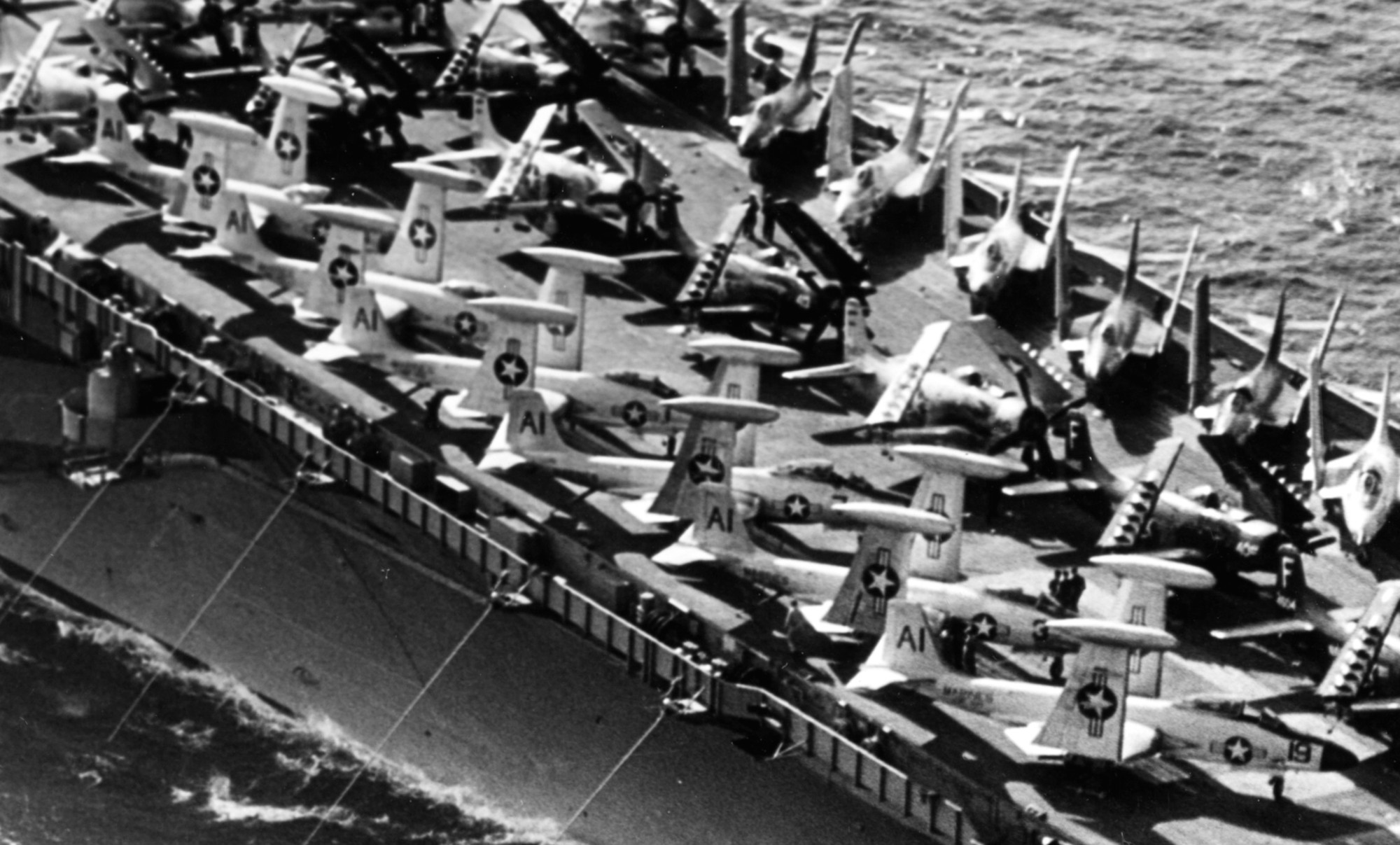 McDonnell F2H-4 Banshees (VMF-533 / CVG-4) aboard USS Saratoga (CVA 60) - 1956  McDonnell F2H-4 Banshee (VMF-533) aboard USS Franklin D. Roosevelt (CVA 42) - 1956 |
||||||
|
|
||||||
|
VMFA(AW)-533 began its history on 1
October, 1943. On this date, Marine Night Fighter Squadron 533
(VMF(N)-533) was commissioned at MCAS Cherry Point, North Carolina.
One of three night fighter squadrons to be activated in the Marine
Corps, the squadron was initially outfitted with the Grumman F6F-3N
Hellcat, equipped with AI radar sets. VMF(N)-533 later upgraded to
the Grumman F6F-5N Hellcat with the APS-3 radar set in the fall of
1944. After a full one year deployment to Engebi in the Marshall
Islands, the squadron moved to Yontan Airfield, Okinawa in May 1945.
By doing so they completed the longest over water flight by a single
engine aircraft of the war. Before hostilities ended in the Pacific,
533 would distinguish itself by claiming the most aerial victories
of any night fighter squadron as well as the first night fighter
ace, Capt Robert Baird. In October 1945, the squadron moved to
Peiping, China and soon transitioned to its next airframe, the
Grumman F7F-3N Tigercat. The Hawks soon moved to Hawaii before
finally settling back in the U.S. at Cherry Point in January 1947.
533 would spend the Korean conflict there as well, training Tigercat
aircrew for night combat overseas. 533 entered the jet age in May 1953 with its acquisition of the F2H-A4 Banshee. They saw several carrier deployments in the ensuing years, followed by another transition to the F9F Cougar in 1957. Yet another change was soon to follow as the squadron received the A-4D Skyhawk in 1959, and with it a redesignation to Marine Attack Squadron 533 (VMA-533). The next change was to come in 1965 when the Hawks received the A-6A Intruder, giving them an all weather capability and the appropriate change in title, VMA(AW)-533. Soon after transitioning to the A-6, 533 deployed to Chu Lai, Republic of Vietnam to support combat operations. They remained there from 1967 to 1969, then redeploying to MCAS Iwakuni, Japan. All told, VMA(AW)-533 accumulated over 10,000 combat sorties in these busy years, garnering them the Commandant’s Aviation Efficiency Trophy. This would not be the last time that the Hawks would see combat over Southeast Asia. They returned to service over Vietnam in 1972, deploying for a year to Nam Phong, Thailand. They were soon flying mission over Cambodia and Laos, as well. They returned to Iwakuni in August 1973, and then to Cherry Point in November 1975, where they received their first A-6E the following year. In April of 1980, VMA(AW)-533 returned to Iwakuni, becoming the first all weather attack squadron to participate in the new Unit Deployment Program (UDP). Throughout the 1980s the squadron deployed, both to Japan and later for several carrier cruises aboard the USS Saratoga and USS John F. Kennedy. The last deployment for the Hawks proved to be longer, as the UDP that began in April 1990 ended and the squadron continued to Bahrain in December 1990 for Operations Desert Shield and Desert Storm. Following participation in those hostilities, VMA(AW)-533 returned home after an “around the world” deployment that lasted eleven and a half months. 1 September 1992 brought many changes to 533, most notably a change to the new F/A-18D Hornet, and with this its newest and current designation, and a move to MCAS Beaufort SC. This made them the first all weather fighter attack squadron in 2nd Marine Aircraft Wing. Soon to follow were countless new training opportunities as the squadron developed and refined new techniques and procedures to match the more capable platform. These techniques would soon be put to the test when VMFA(AW)-533 was deployed to Aviano Air Base in July 1993. They returned three times over the next five years, flying a wide variety of missions to support NATO operations. Following their first UDP in Hornets in 1999, 533 returned one last time to Eastern Europe, this time operating from Taszar AB, Hungary. Next for the squadron was yet another UDP, from January 2001 to July 2001. Of great tactical significance was the work that the squadron did with the 31st Marine Expeditionary Unit, Special Operations Capable (MEU (SOC)). The Hawks became the first land based fixed wing squadron to successfully a MEU (SOC) afloat, executing an island-hopping campaign throughout the Pacific that would take them to airfields not seen by US forces since World War II. Soon, preparations were underway for the next UDP in January 2003. But as that date drew near, VMFA(AW)-533 received word that the squadron would instead deploy to the CENTCOM AOR supporting Operations Southern Watch and Iraqi Freedom, arriving at Al-Jaber Air Base 11 February 2003. On 20 March coalition forces began the ground offensive with support from the squadron’s Hornets. While operating around the clock, the squadron expended over 800,000 pounds of ordnance, flying 558 sorties and 1440 flight hours. For their outstanding support of the successful campaign against the Iraqi regime, the Hawks were awarded another Presidential Unit Citation. After their safe return, the Hawks continued to train, focusing on air-to-ground skills at Combined Arms Exercises in California in January and February 2004. Soon enough the squadron was once again on the move, spending the latter half of 2004 in various locations around the Pacific for its most recent UDP. In February 2006 the Hawks deployed to Al Asad Air Base in the Al Anbar Province of Iraq. The squadron was assigned to the 3rd Marine Aircraft Wing in support of 1st Marine Expeditionary Force. The Hawks employed the F/A-18D with the Litening II FLIR/TV pod in a myriad of roles which included reconnaissance, surveillance, convoy escort, close-air support, strike missions, forward air controller airborne (FAC(A)) and tactical air controller airborne (TAC(A)). While once again operating around the clock, the squadron expended over 110,000 pounds of ordnance, flying 2480 sorties and 7456 flight hours. source: USMC - - - - - another history: World War II: On October 1, 1943, Marine Night Fighter Squadron 533 (VMF(N)-533) was commissioned at Marine Corps Air Station Cherry Point, North Carolina. Originally known as "Black Mac's Killers", after their first commanding officer Major Marion M. Magruder, they were one of three night fighter squadrons to be activated in the Marine Corps and were outfitted with the Grumman F6F-5N Hellcat, equipped with the APS-6 radar. The squadron left for the West Coast in early April and on April 16, they embarked on board the USS Long Island (CVE-1) headed for the South Pacific. In May 1944, the squadron conducted their final training on the F6F aboard Marine Corps Air Station Ewa, Hawaii and then headed for Eniwetok. On June 12 they relieved VMF(N)-532 and assumed night defense responsibilities for the area. On November 30 they moved to Engebi and continued operations. On May 7, 1945, with only two days notice, the squadron of 15 F6F Hellcat planes took off from Engebi with R5C escorts and flew to Saipan, a total of 1,004 nautical miles (1,859 km). This was the longest flight ever over water by a squadron in single engine military aircraft. Each plane had a 150-gallon belly tank, and the squadron had to travel at the speed of the slowest plane. The squadron moved to Yontan Airfield, Okinawa in May 1945 and finally settled on Ie Shima on June 15, 1945. Between May 14 and June 29, 533 would claim shooting down 30 Japanese planes - by radar, at night - without one operational loss. This was a night fighter record for enemy planes shot down by a single squadron. They also had the first night fighter ace, Capt Robert Baird. The first F7F-2N Tigercat for the squadron arrived on Okinawa the day before the end of the war so it did not see combat. In October 1945, the squadron moved to Peiping, China for occupation duty and completed their transition to the new Tigercat. The Hawks soon moved to Hawaii before finally settling back in the U.S. at MCAS Cherry Point in January 1947. 533 would spend the Korean War there as well, training Tigercat aircrew for night combat overseas. 1950s - 1960s: VMF-533 entered the jet age in May 1953 with its acquisition of the F2H-4 Banshee. They saw several carrier deployments in the ensuing years, followed by another transition to the F9F Cougar in 1957. Yet another change was soon to follow as the squadron received the A4D Skyhawk in 1959, and with it a redesignation to Marine Attack Squadron 533 (VMA-533). The next change was to come in 1965 when the Hawks received the A-6A Intruder, giving them an all-weather capability and the appropriate change in title, VMA(AW)-533. Vietnam War: Soon after transitioning to the A-6, VMA(AW)533 deployed to Chu Lai Air Base, Republic of Vietnam to support combat operations. They remained there from 1967 to 1969, then redeploying to Marine Corps Air Station Iwakuni, Japan. All told, VMA(AW)-533 accumulated over 10,000 combat sorties in these busy years, garnering them the Commandant’s Aviation Efficiency Trophy. In one noted incident, on October 25, 1967, three A-6A Intruders from VMA(AW)-533 attacked the Phuc Yen Air Base outside of Hanoi and the action was so intense all three pilots were awarded the Navy Cross. These pilots were among the few aviators to receive Navy Crosses awarded to fixed wing pilots during the Vietnam War. This would not be the last time that the Hawks would see combat over Southeast Asia. They returned to service over Vietnam in 1972, deploying for a year to Royal Thai Air Base Nam Phong, Thailand. They were soon flying mission over Cambodia and Laos, as well. They returned to MCAS Iwakuni in September 1973, and then to MCAS Cherry Point in November 1975, where they received their first A-6E the following year. Gulf War & the 1990s: The squadron deployed to Bahrain in December 1990 for Operation Desert Shield and Operation Desert Storm. Following participation in those hostilities, VMA(AW)-533 returned home after an “around the world” deployment that lasted eleven and a half months. September 1, 1992 brought many changes to 533, most notably a change to the new F/A-18D Hornet, and with this its newest and current designation, and a move to Marine Corps Air Station Beaufort, South Carolina. This made them the first all-weather fighter attack squadron in 2nd Marine Aircraft Wing. These techniques would soon be put to the test when VMFA(AW)-533 was deployed to Aviano Air Base in July 1993. They returned three times over the next five years, flying a wide variety of missions to support NATO operations. In 1999, the squadron supported Operation Allied Force in Yugoslavia from Taszar Air Base Hungary and flew 111 combat sorties during the conflict. After the cease-fire of June 11, 1999, the Hawks flew an additional 82 combat sorties to ensure Serb compliance with the withdrawal from Kosovo. Global War on Terror: The squadron deployed to the Kuwait supporting Operation Southern Watch and Operation Iraqi Freedom, arriving at Al-Jaber Air Base on February 11, 2003. On March 20, coalition forces began the ground offensive with support from the squadron’s Hornets. While operating around the clock, the squadron expended over 800,000 pounds of ordnance, flying 558 sorties and 1440 flight hours. For their support of the successful campaign against the Iraqi regime, the Hawks were awarded another Presidential Unit Citation. In the Spring of 2006 they redeployed to Iraq in support of Operation Iraqi Freedom. In February 2008 the squadron deployed to Marine Corps Air Station Iwakuni, Japan as part of the Unit Deployment Program in which they were the first east coast squadron to deploy straight from MCAS Beaufort directly to Yecheon Air Base, South Korea. In September 2008 the squadron returned to MCAS Beaufort. Summer of 2009, and March-October’s of 2014, and 2018 the squadron deployed to MCAS Iwakuni to take part in the Unit Deployment Program. During their 2009 UDP, they provided real-time imagery and reconnaissance during relief efforts in the Philippines following Typhoon Ketsana. In 2014 and specifically 2018 the focus was in the Korea Area of Operations as tensions were heightened throughout the Pacific. source: wikipedia |
||||||
|
|
||||||
| patches + more | ||||||
 |
||||||
|
|
||||||
| | seaforces.org | US Marine Corps Air units start page | |
